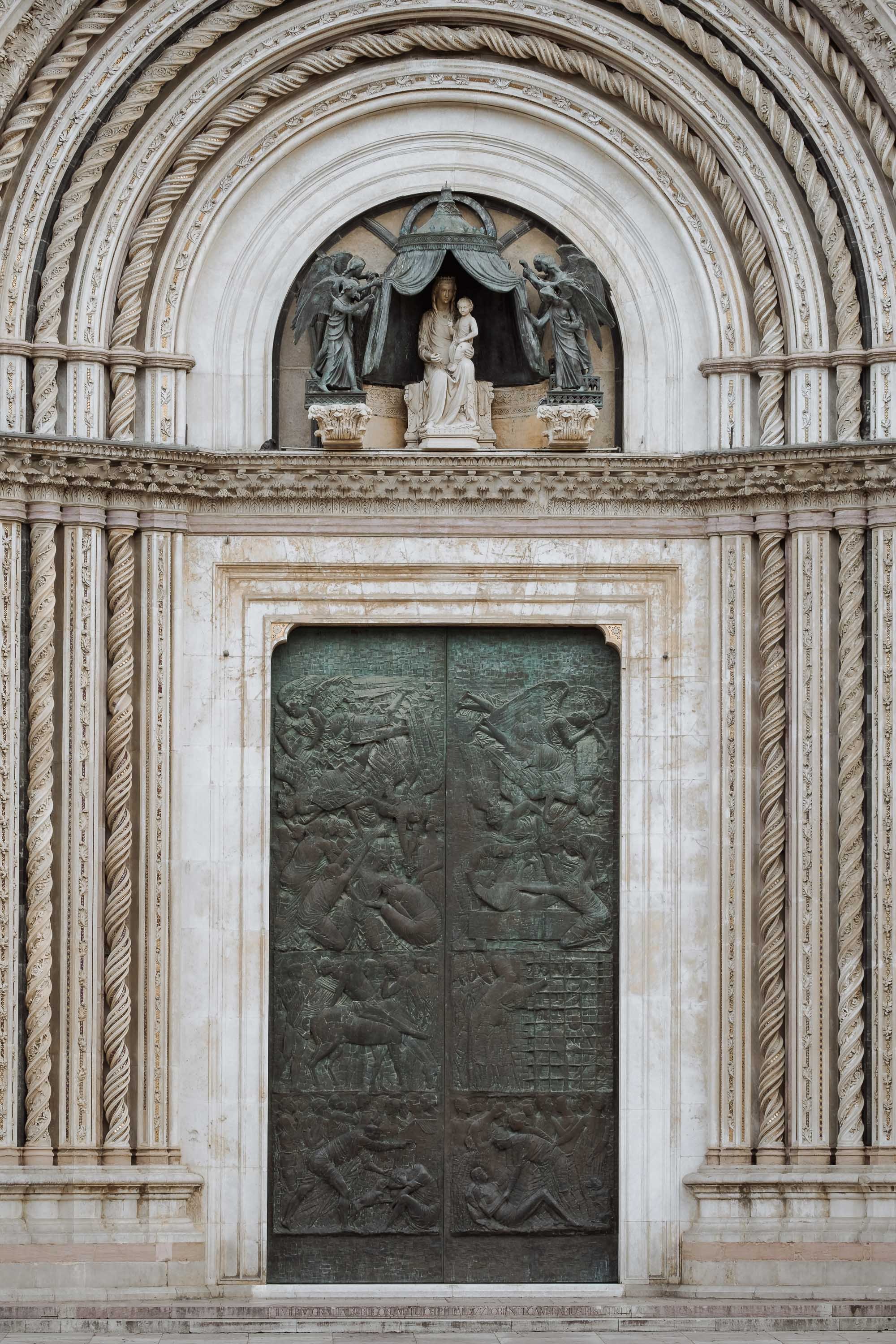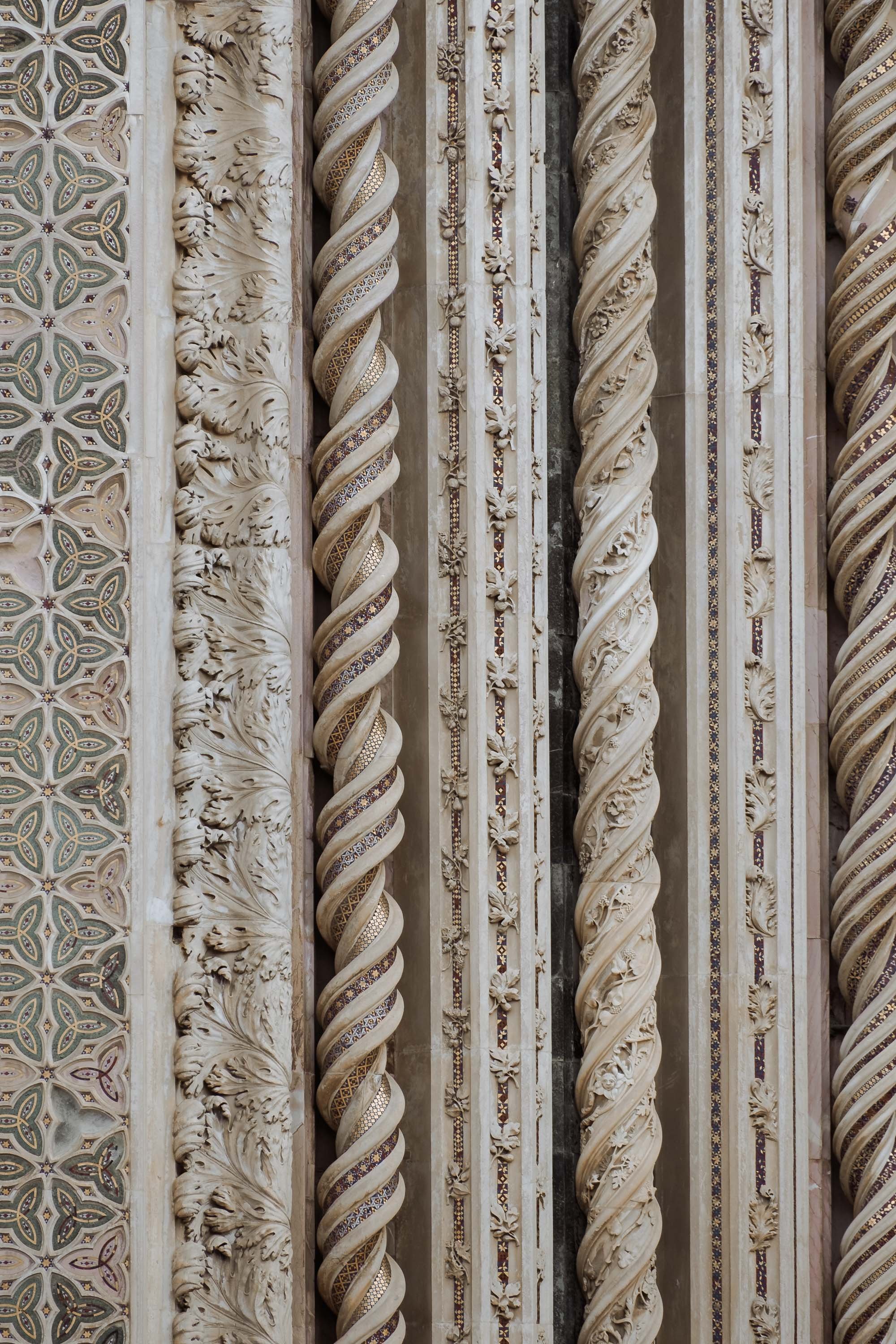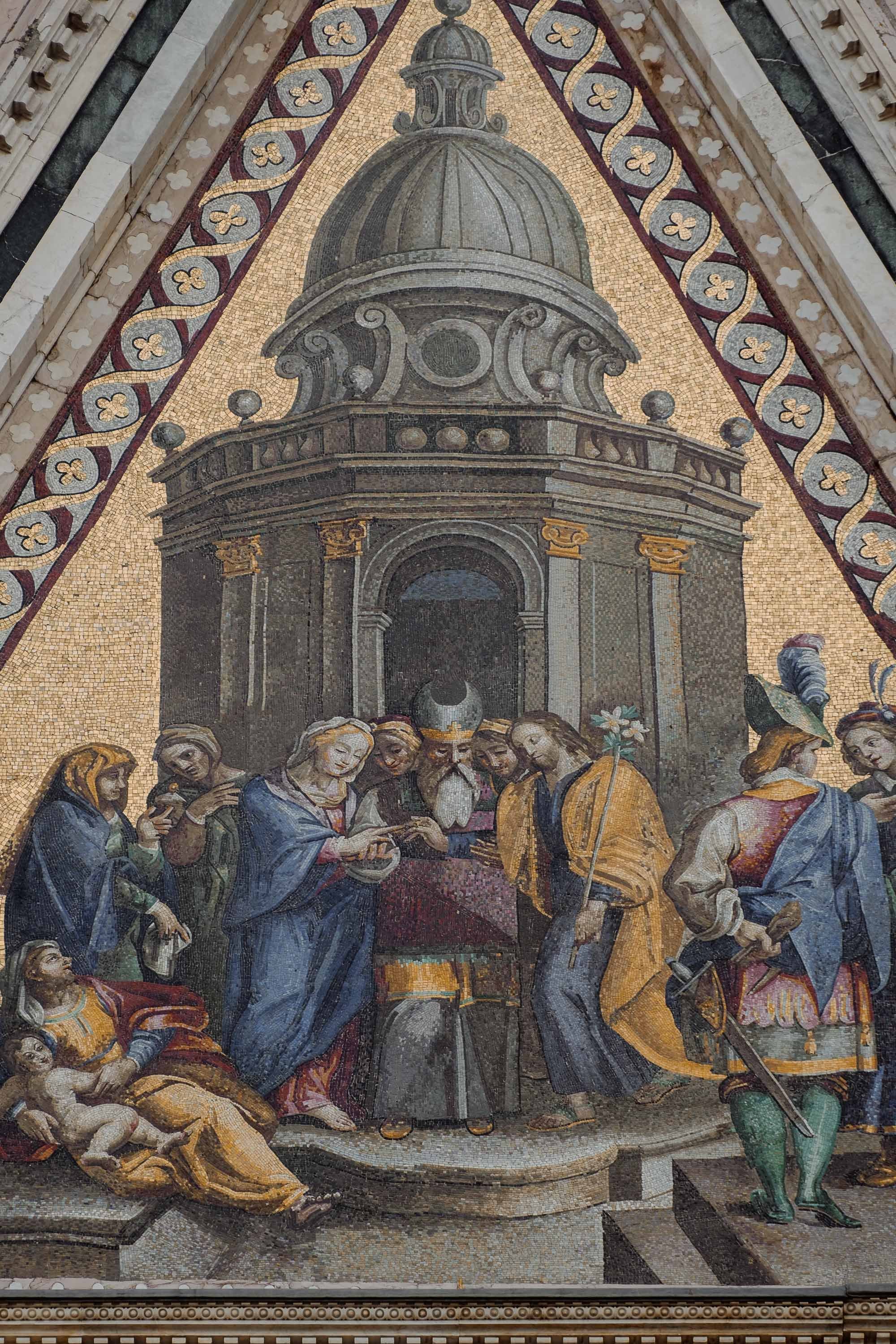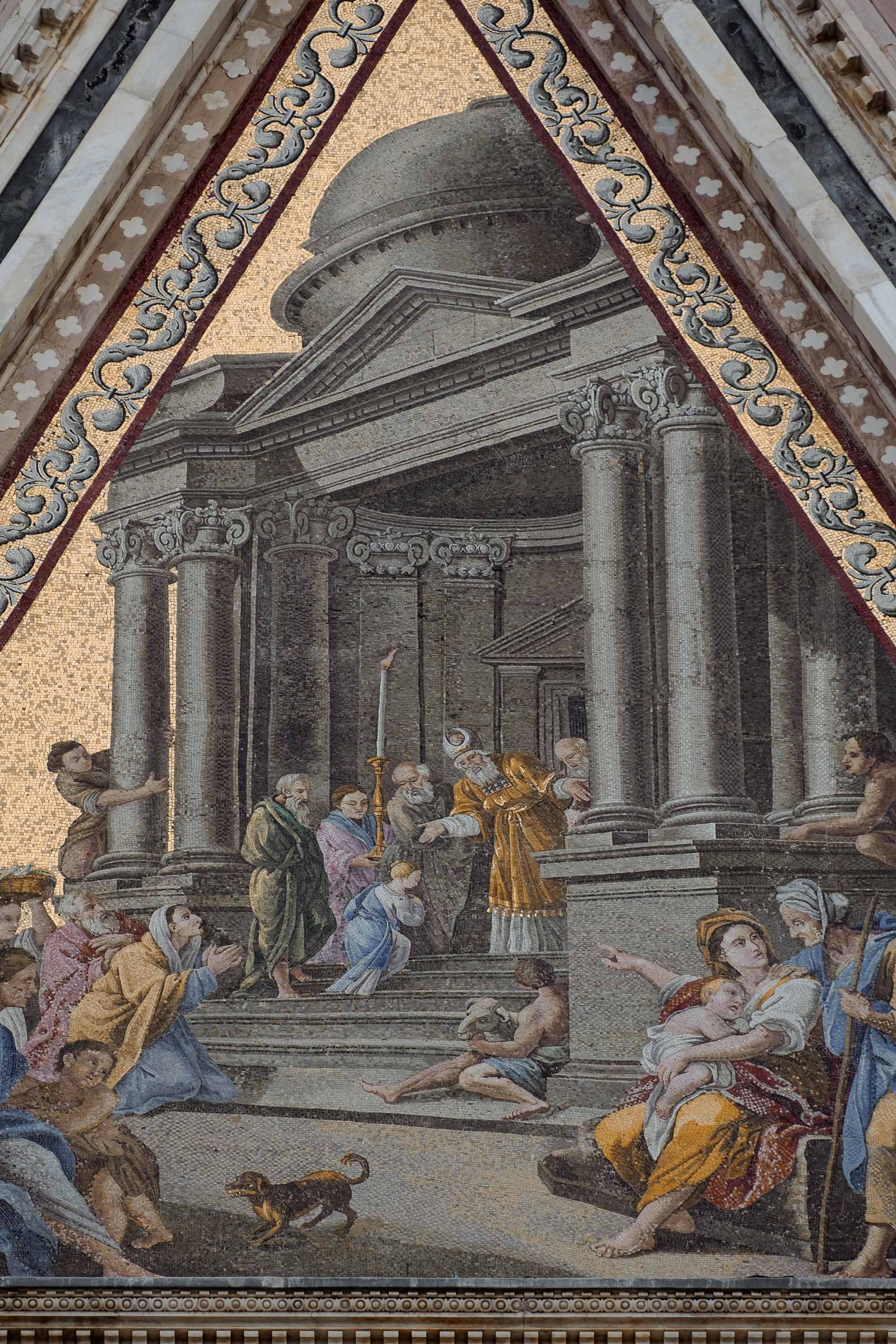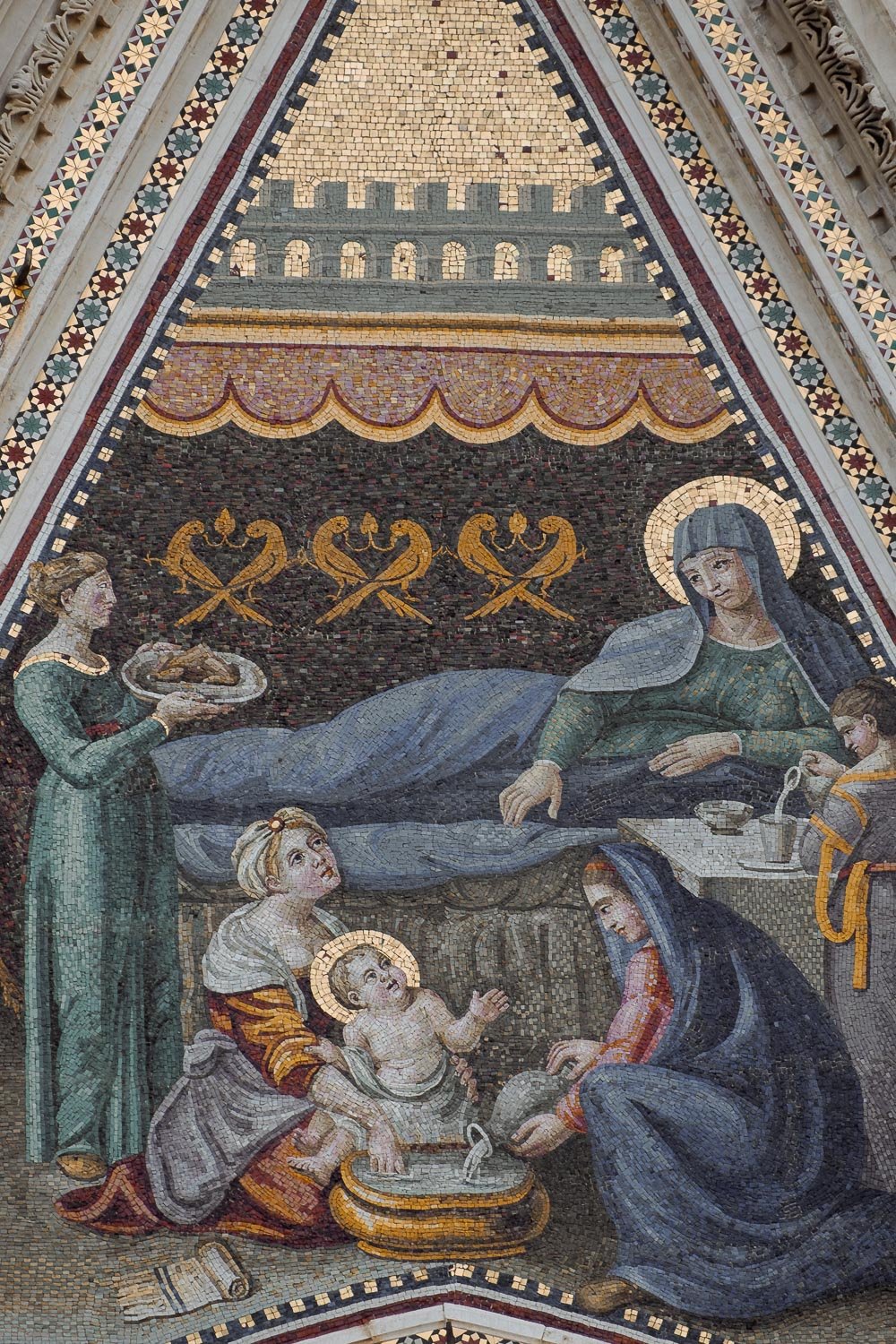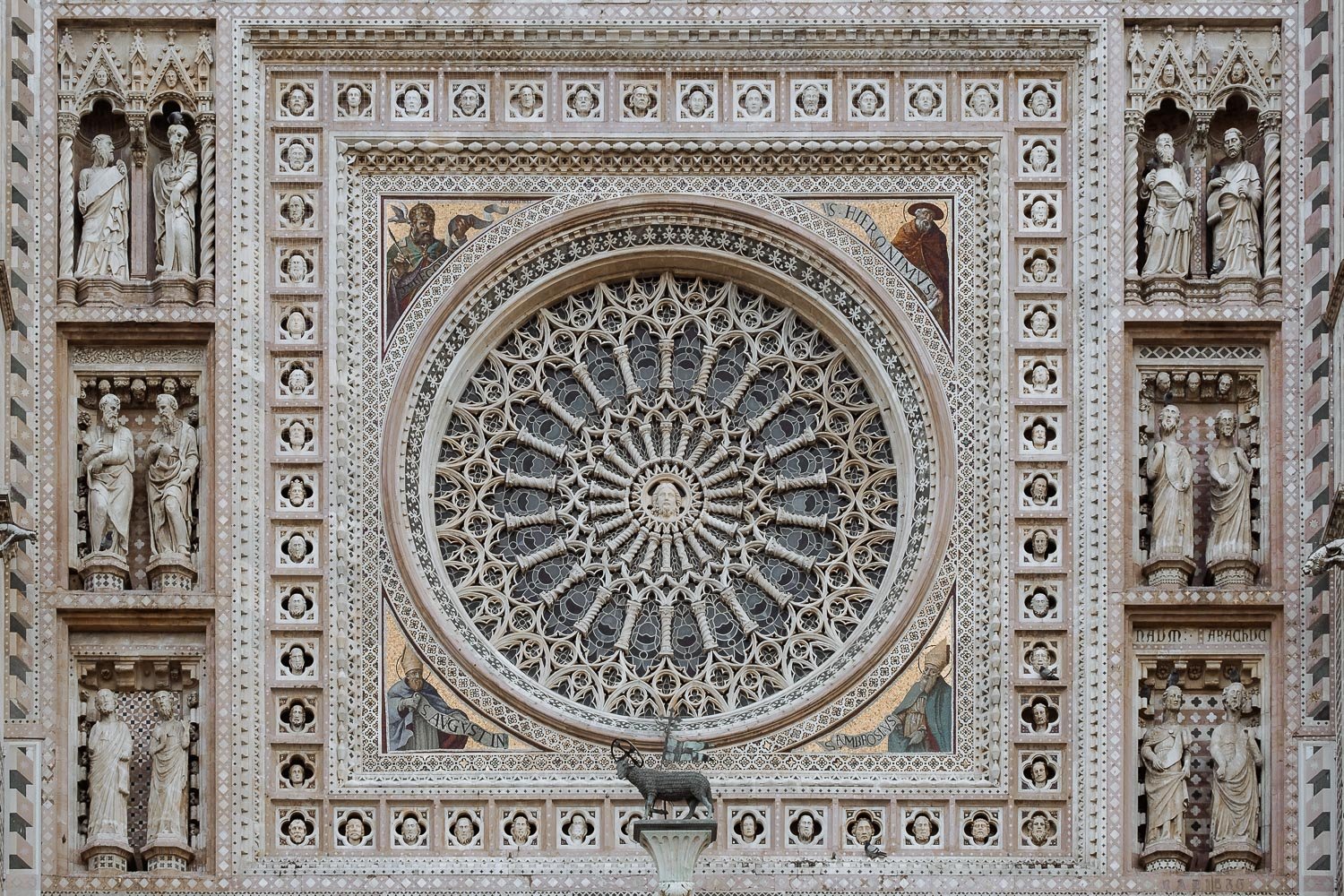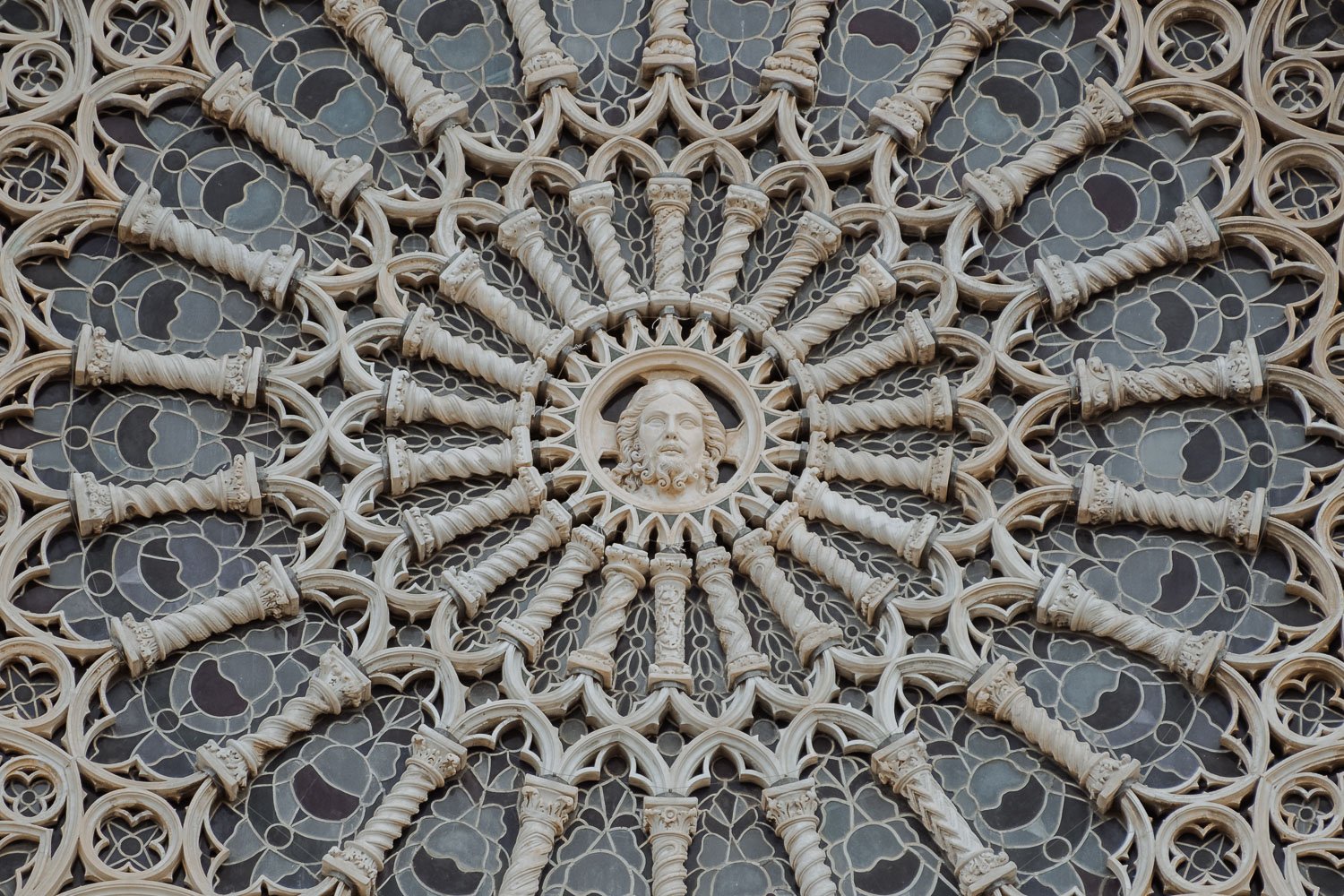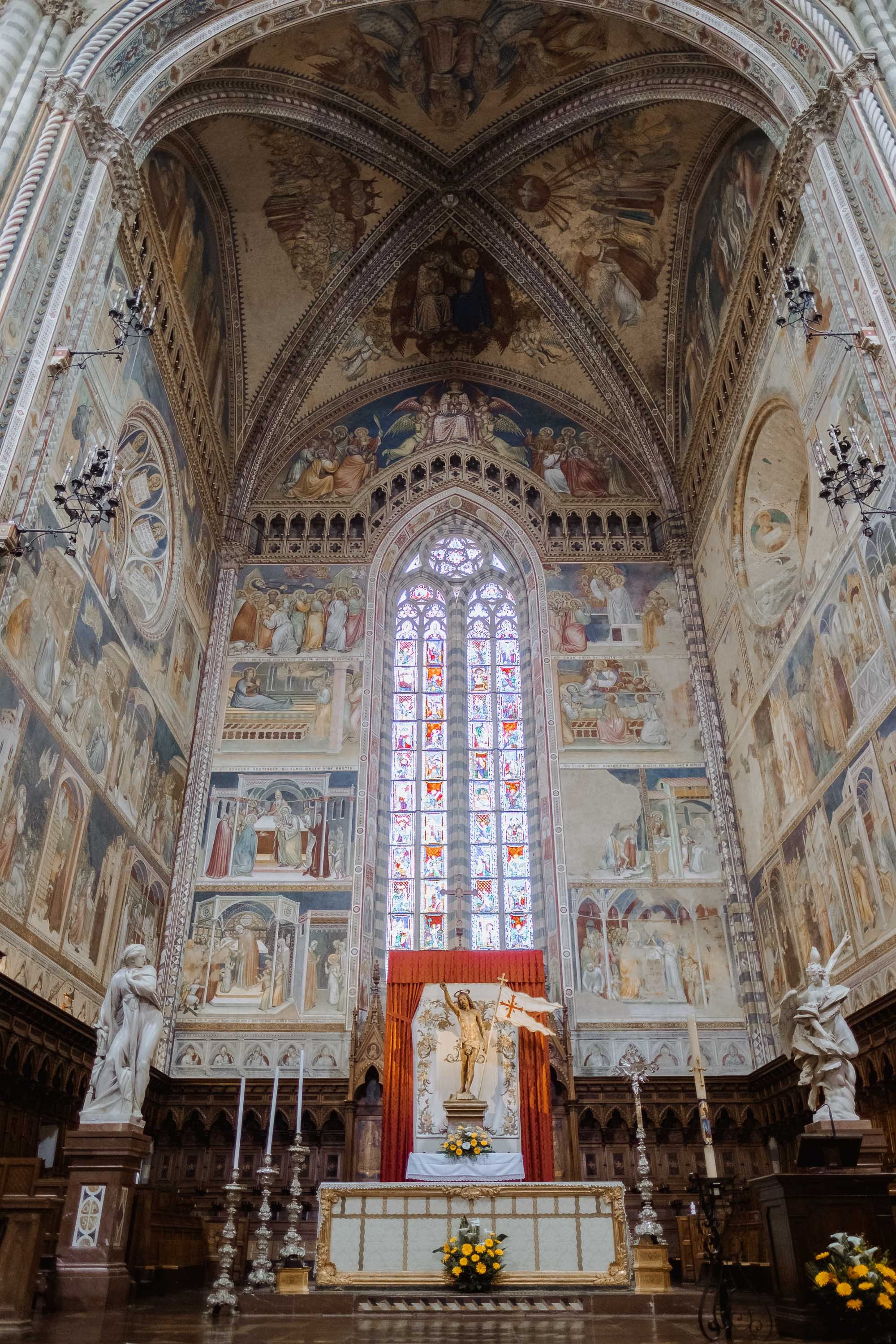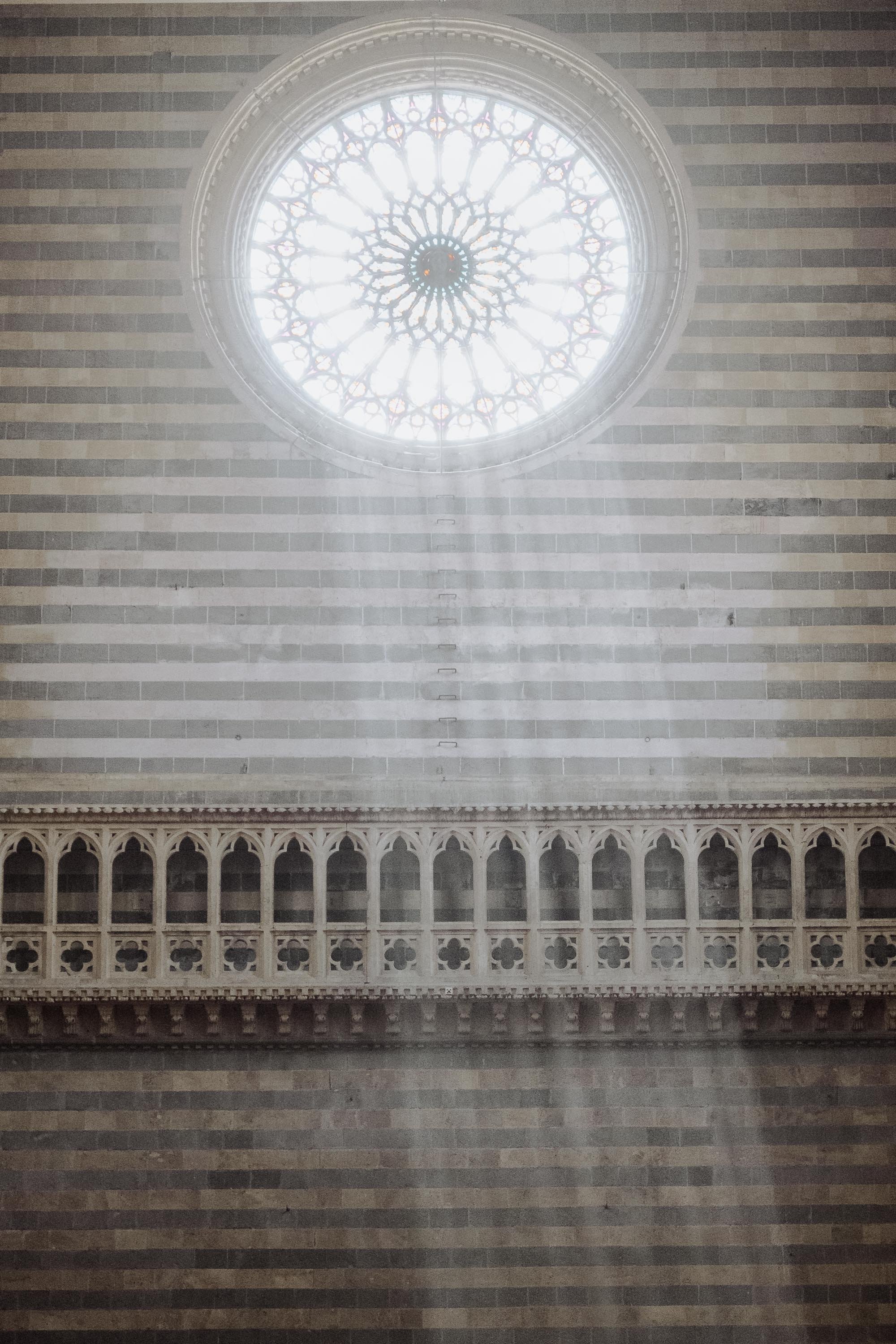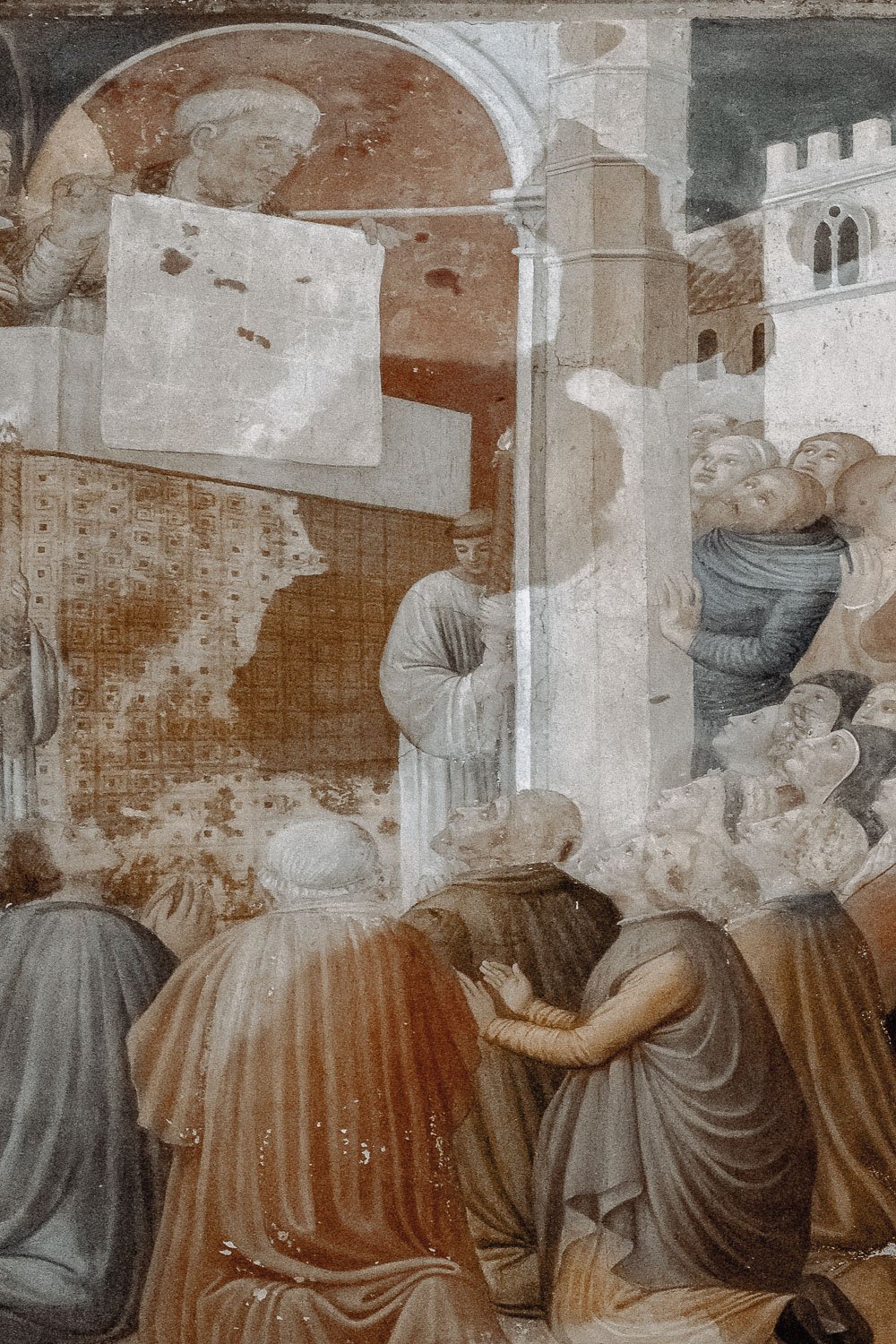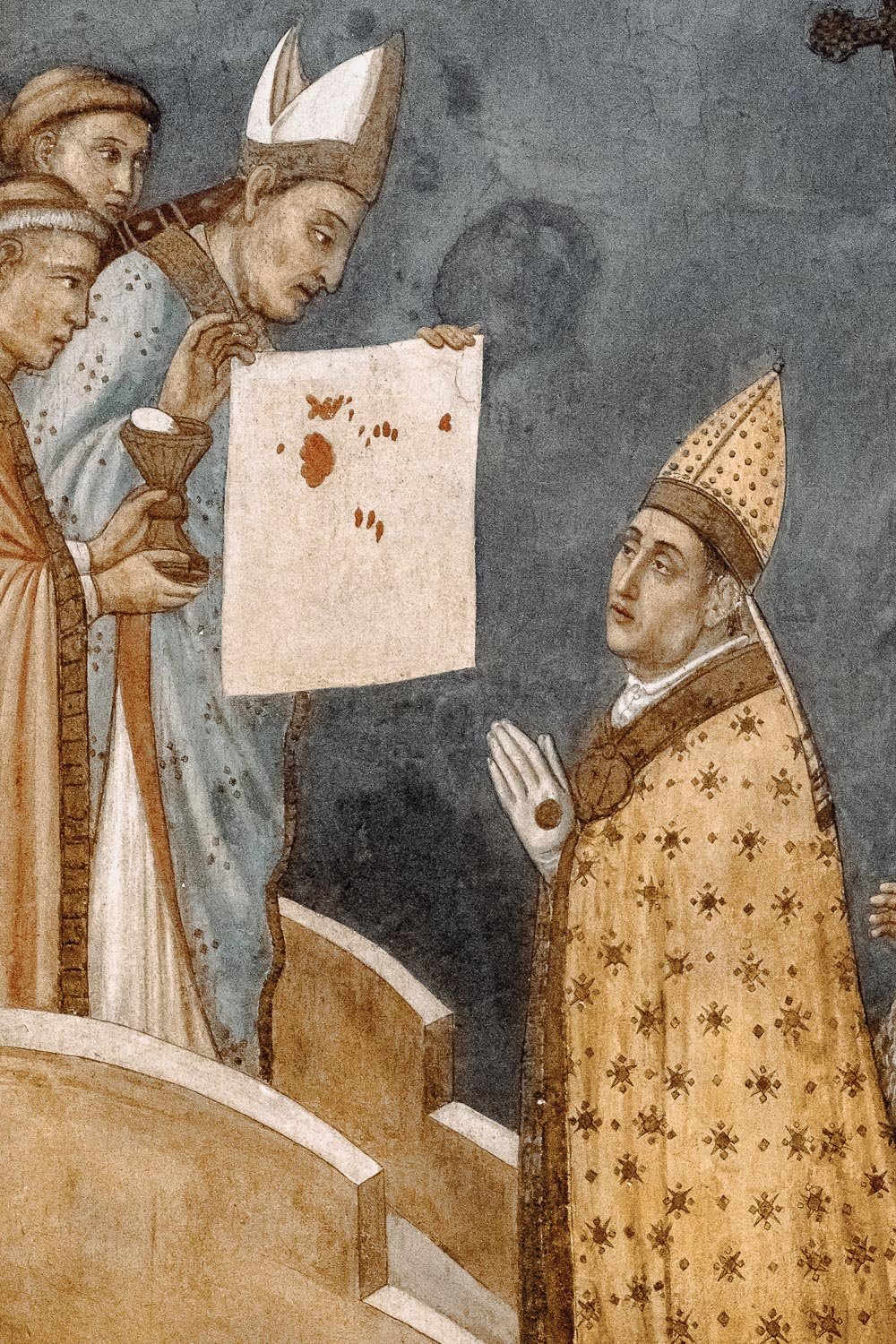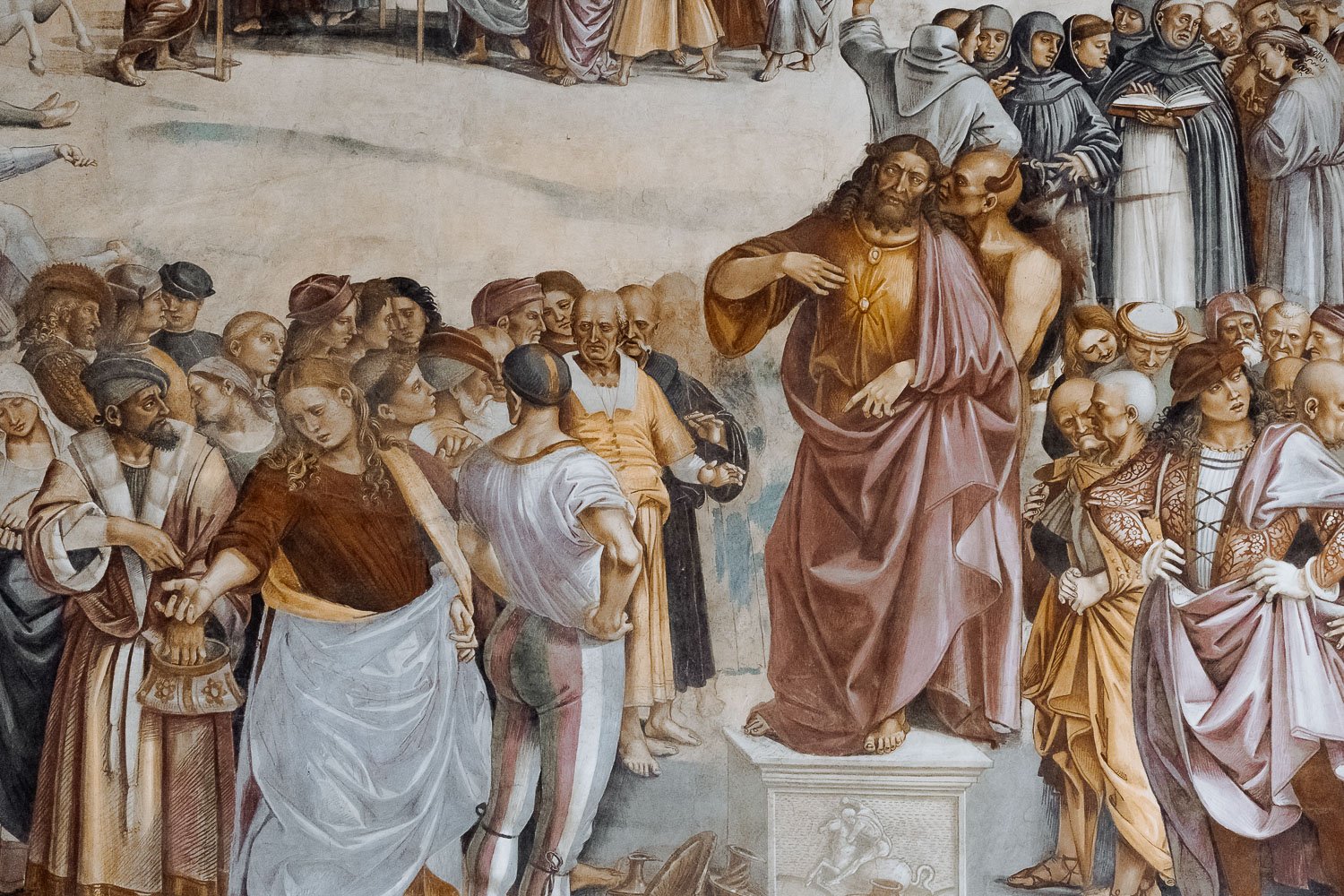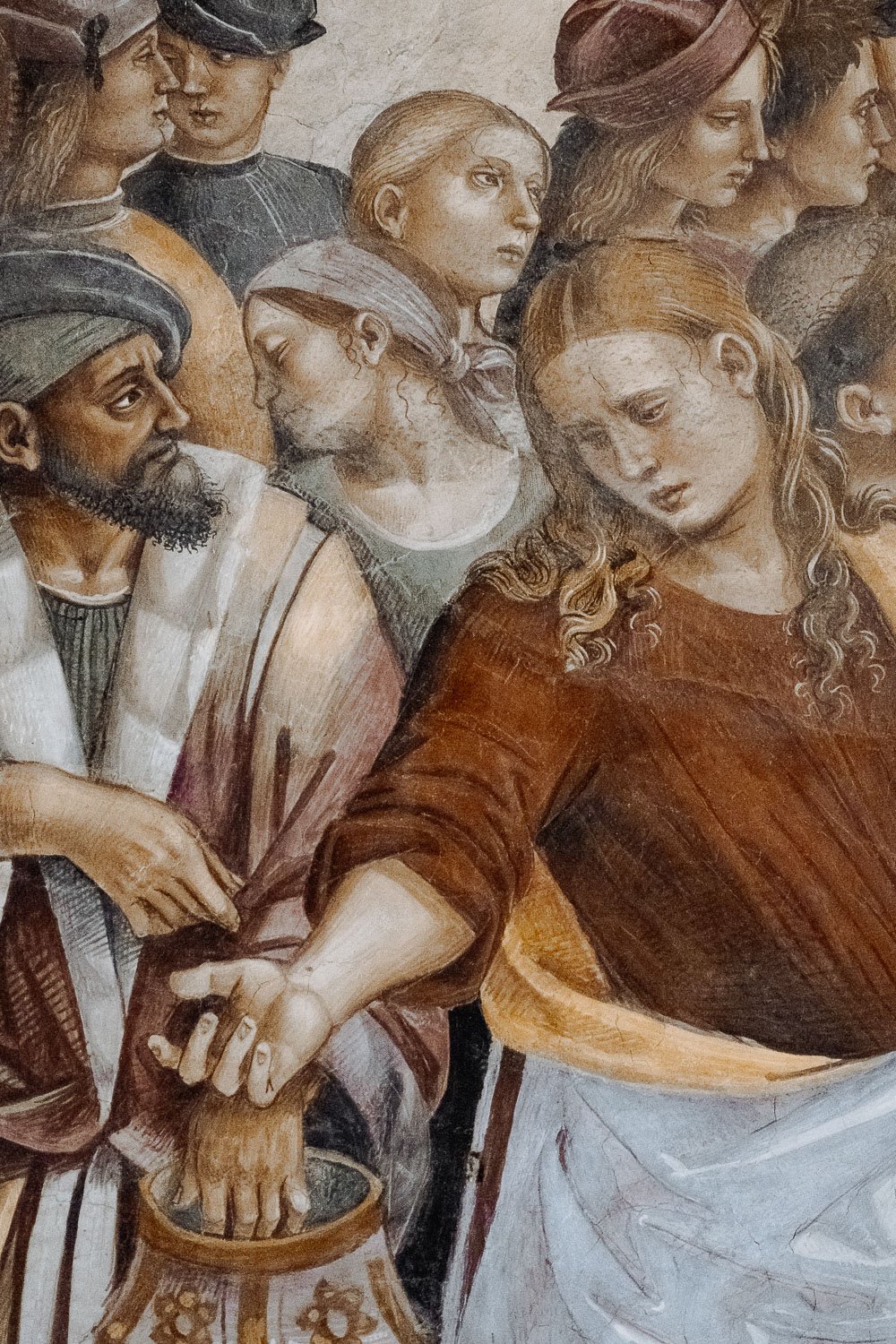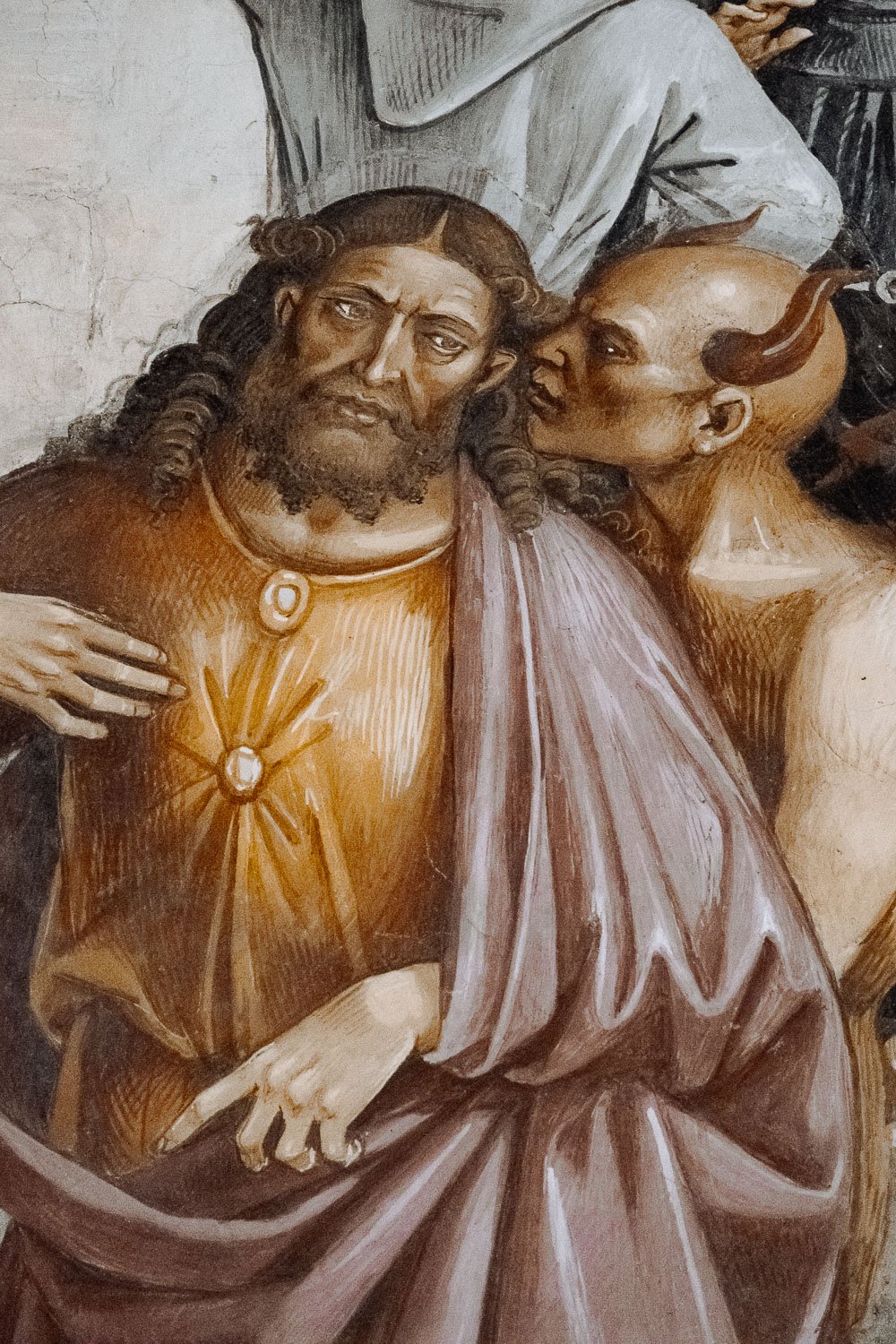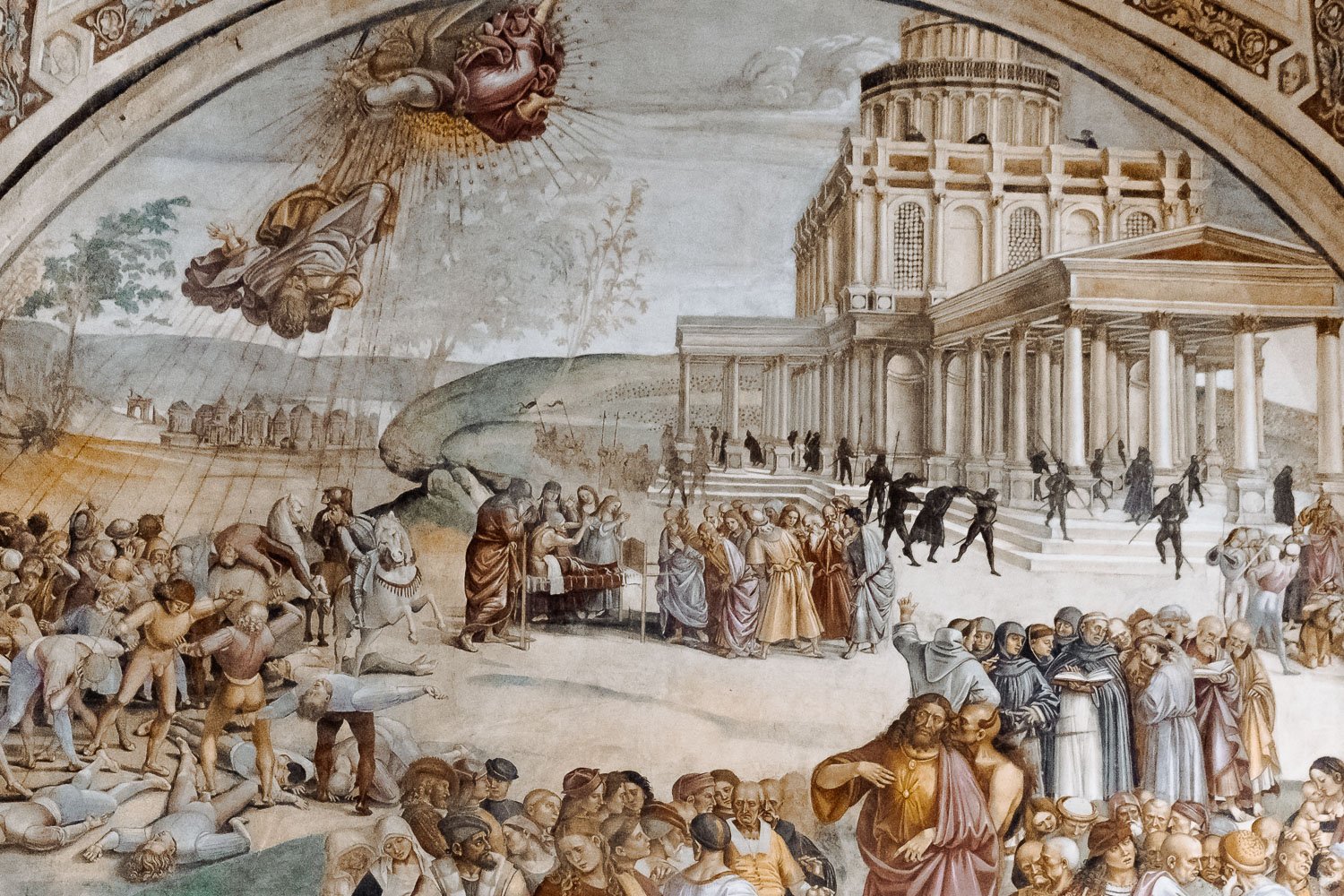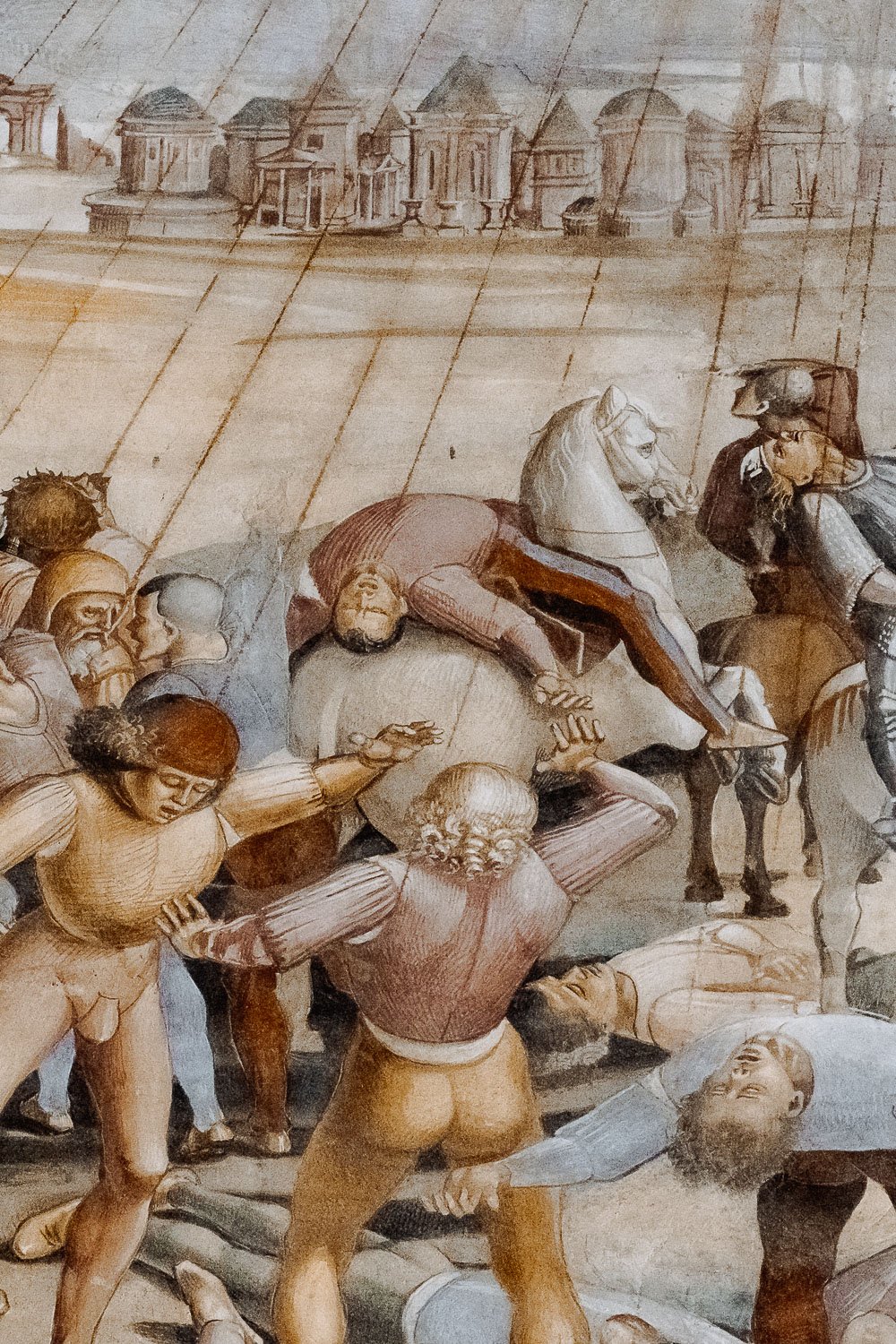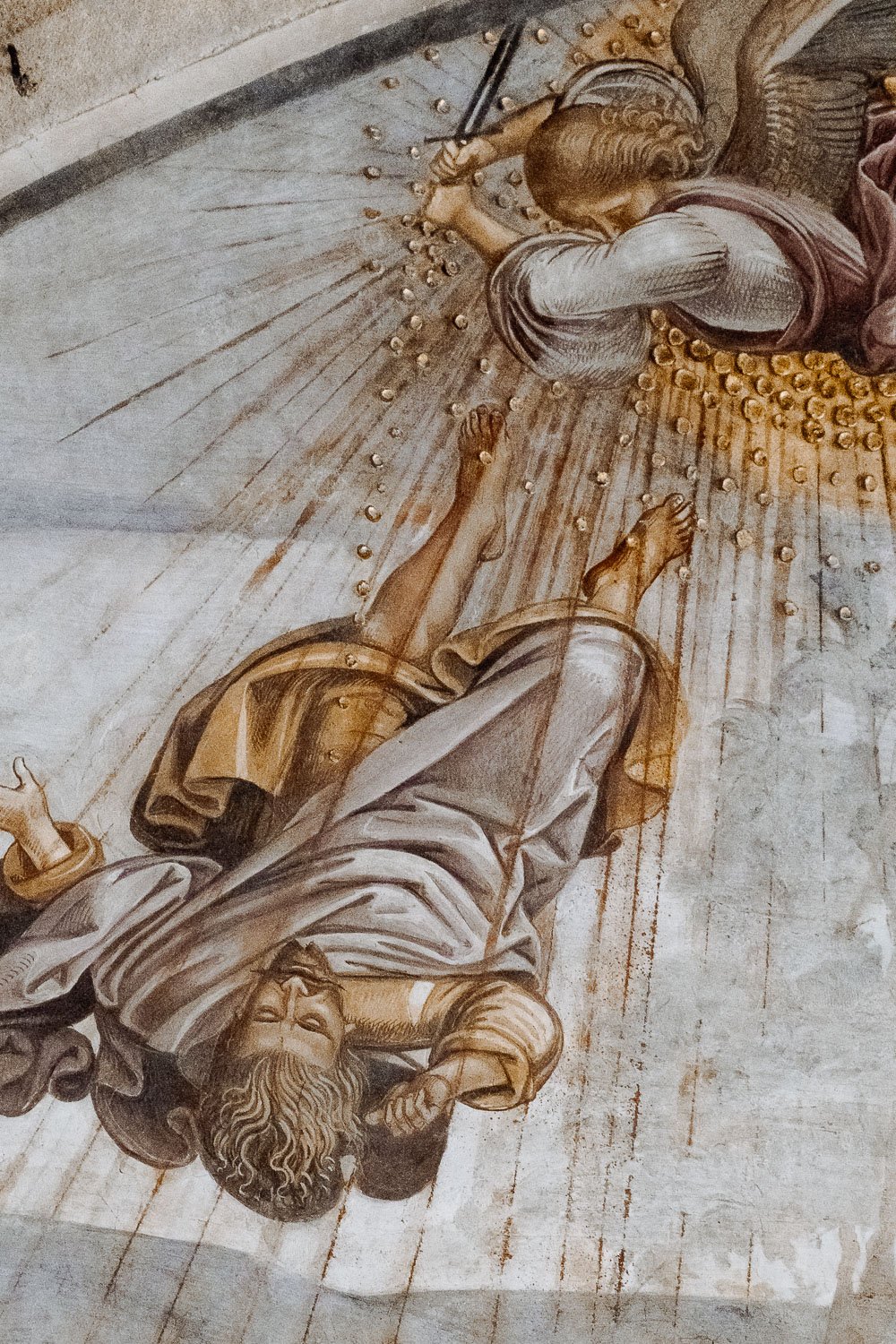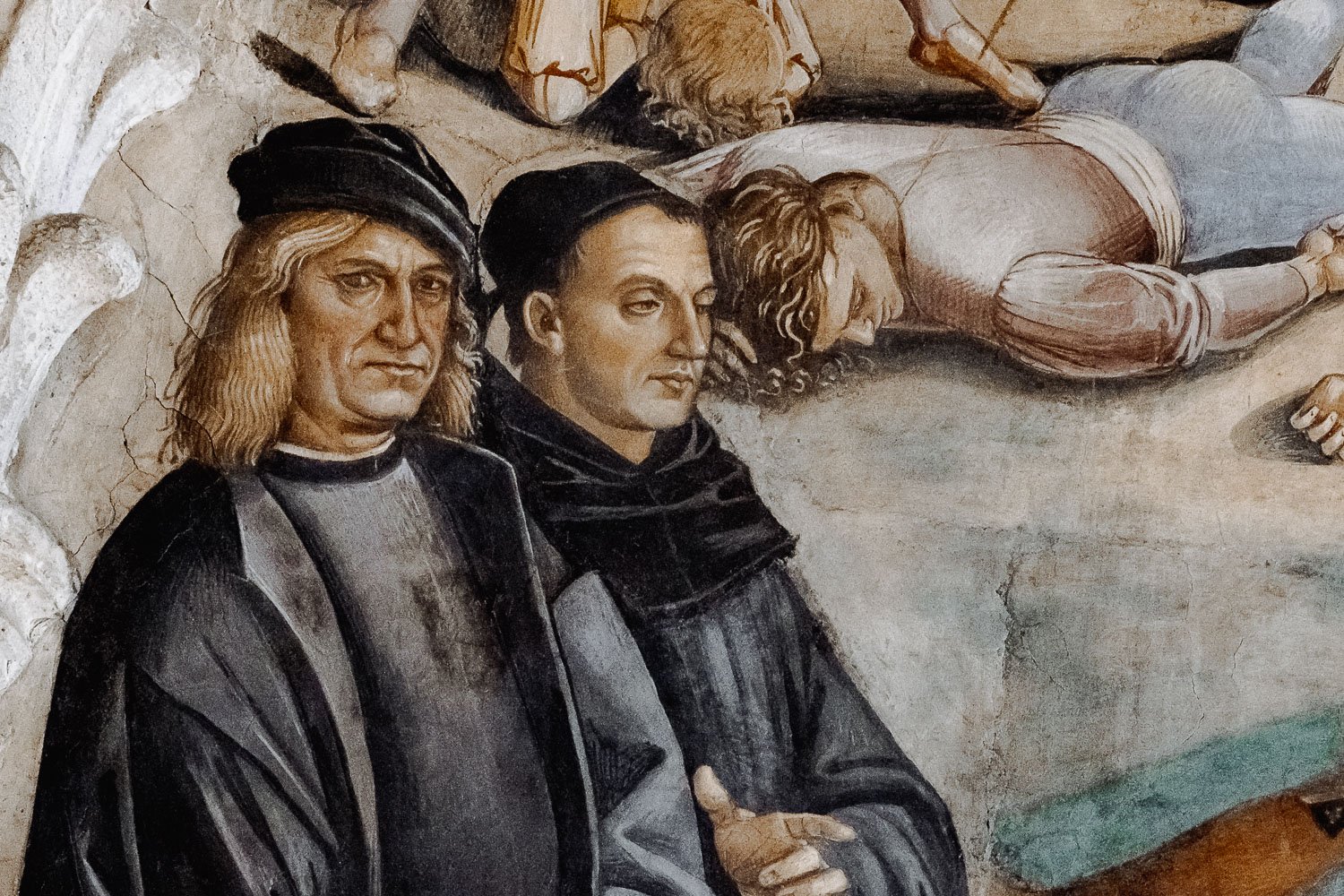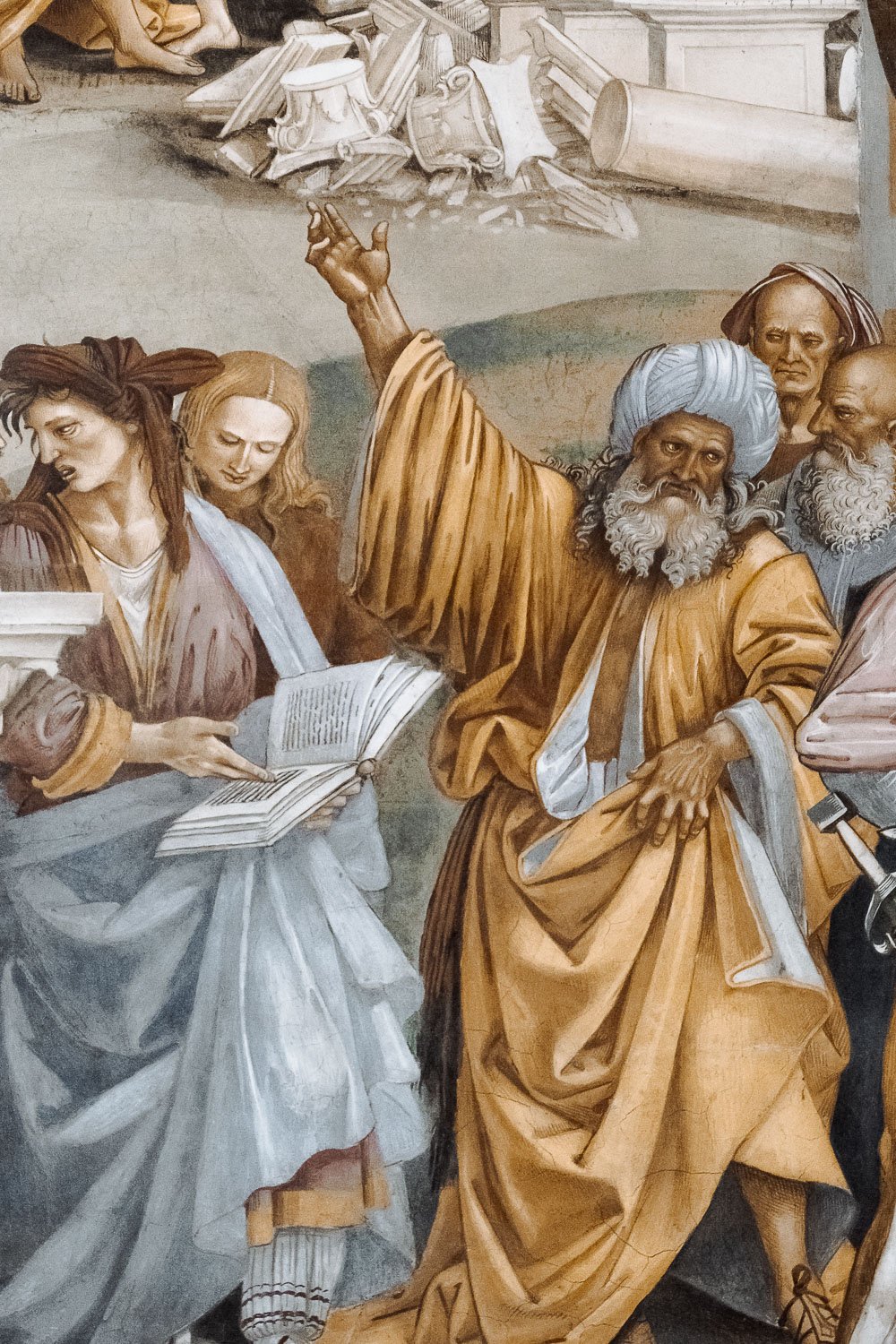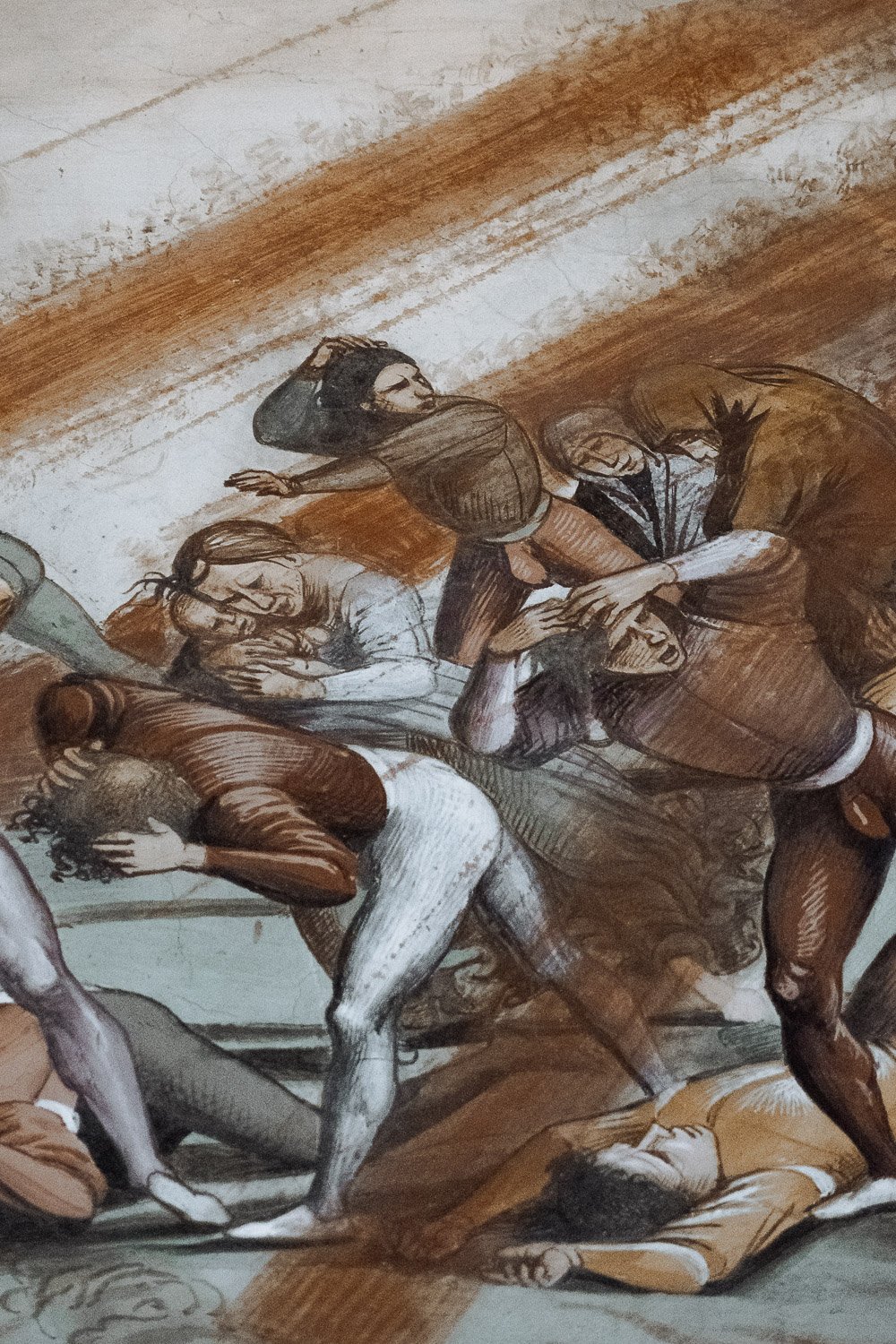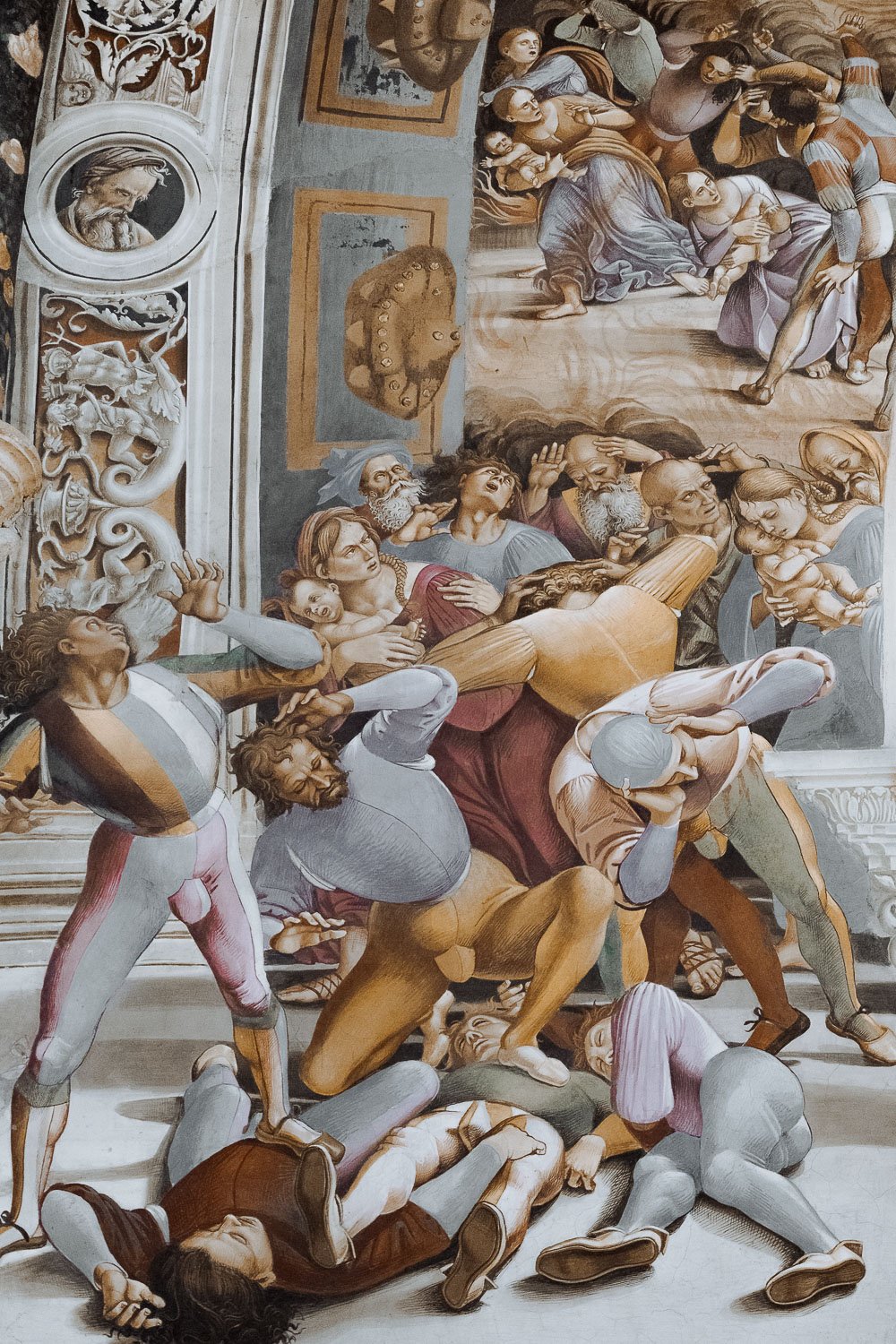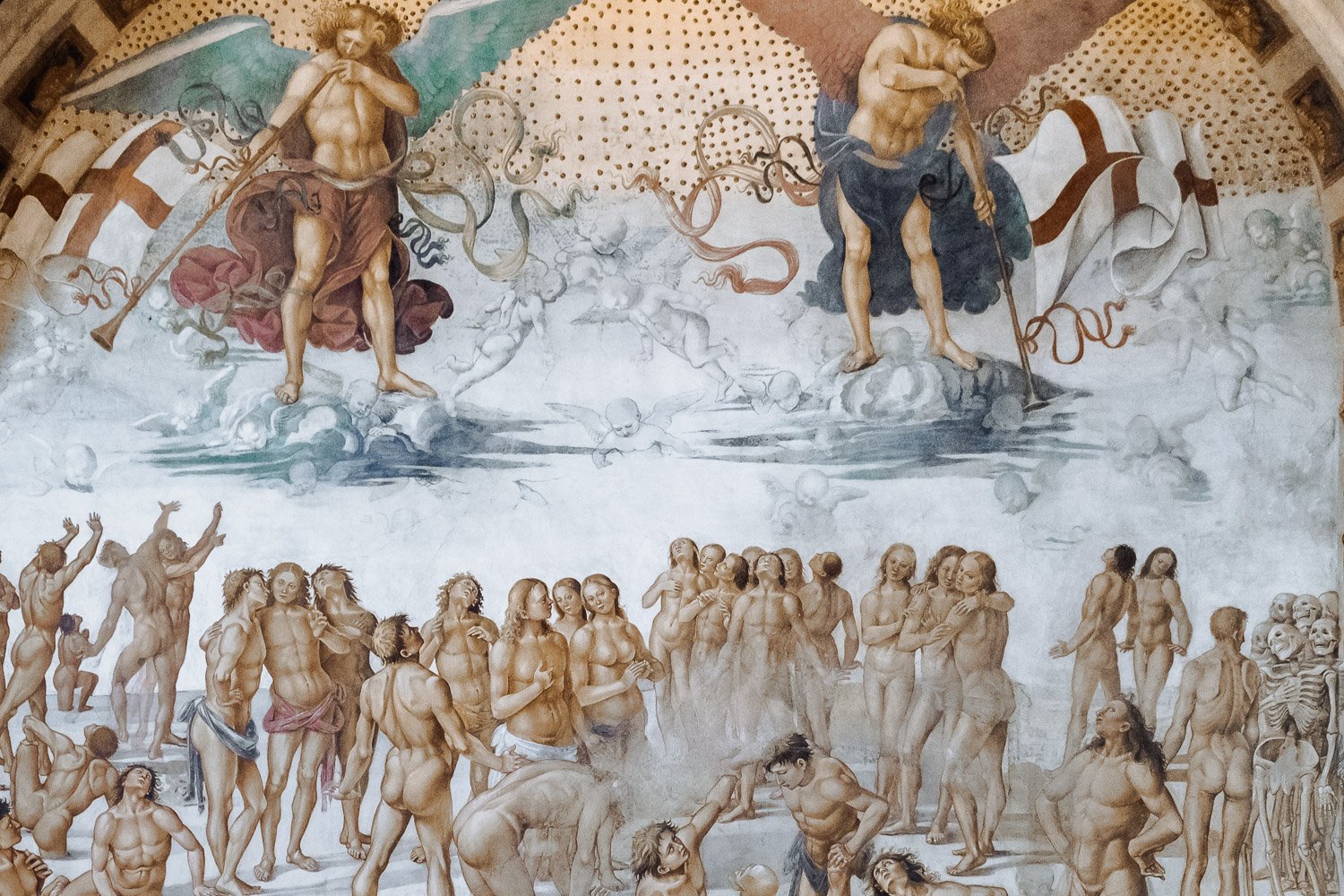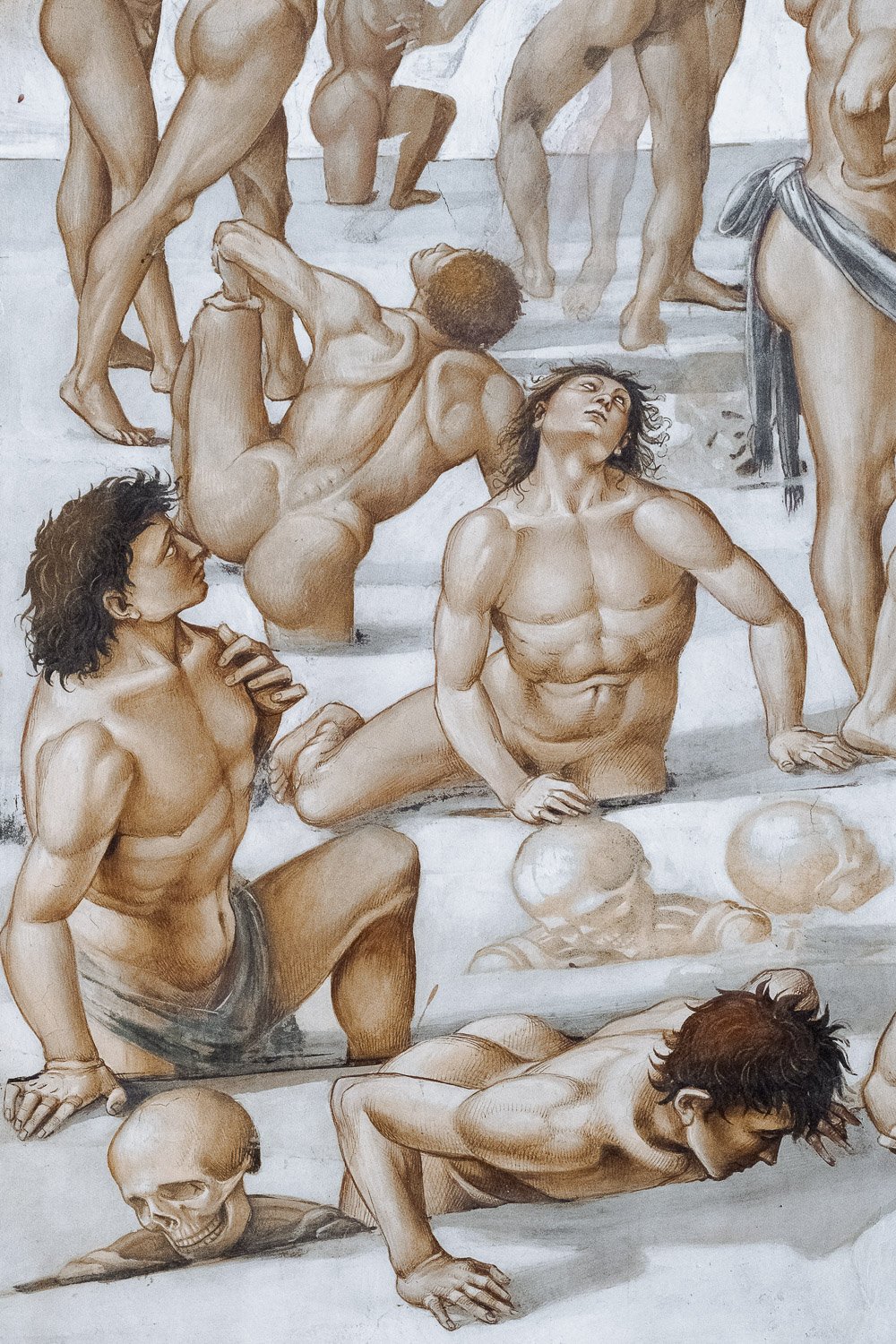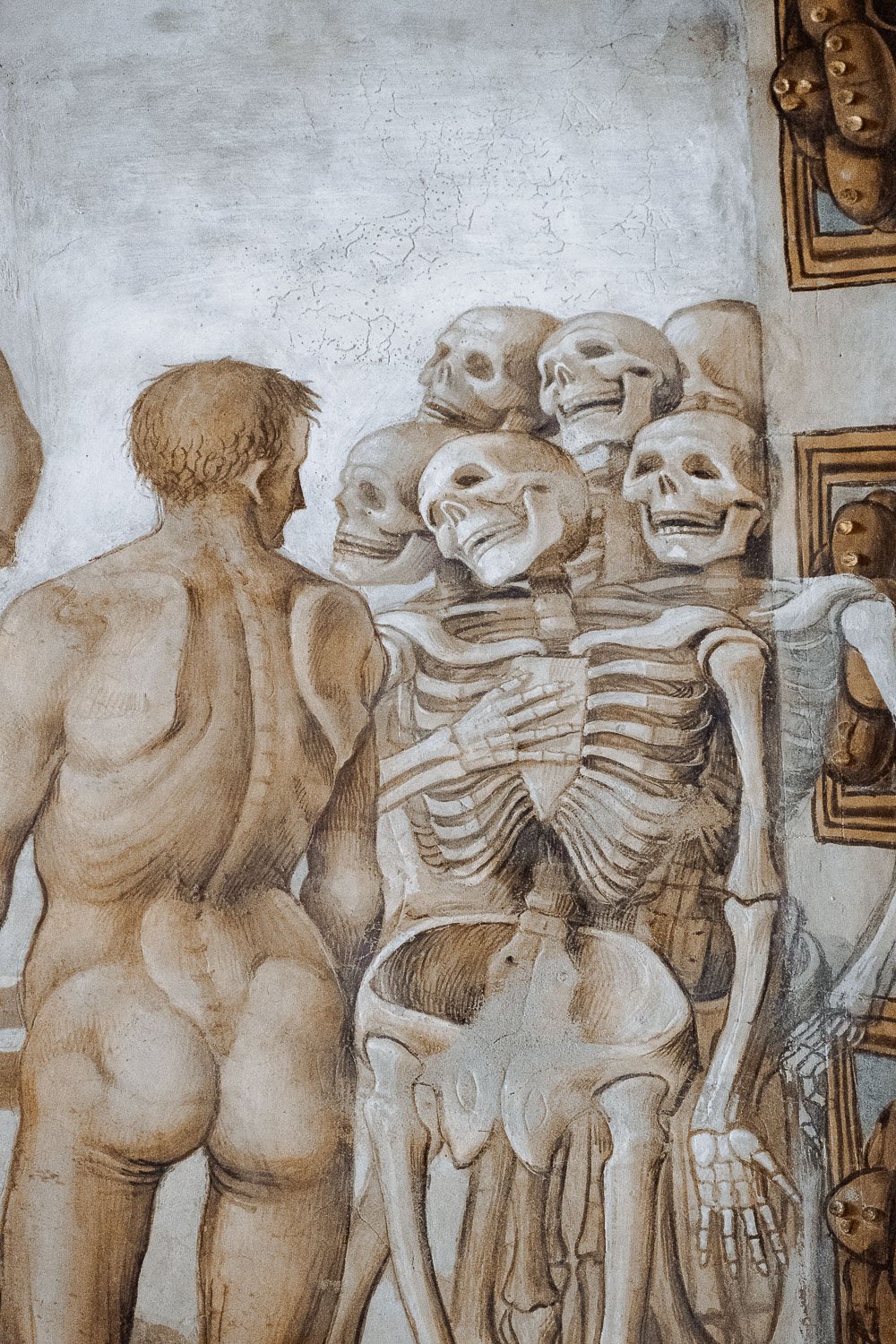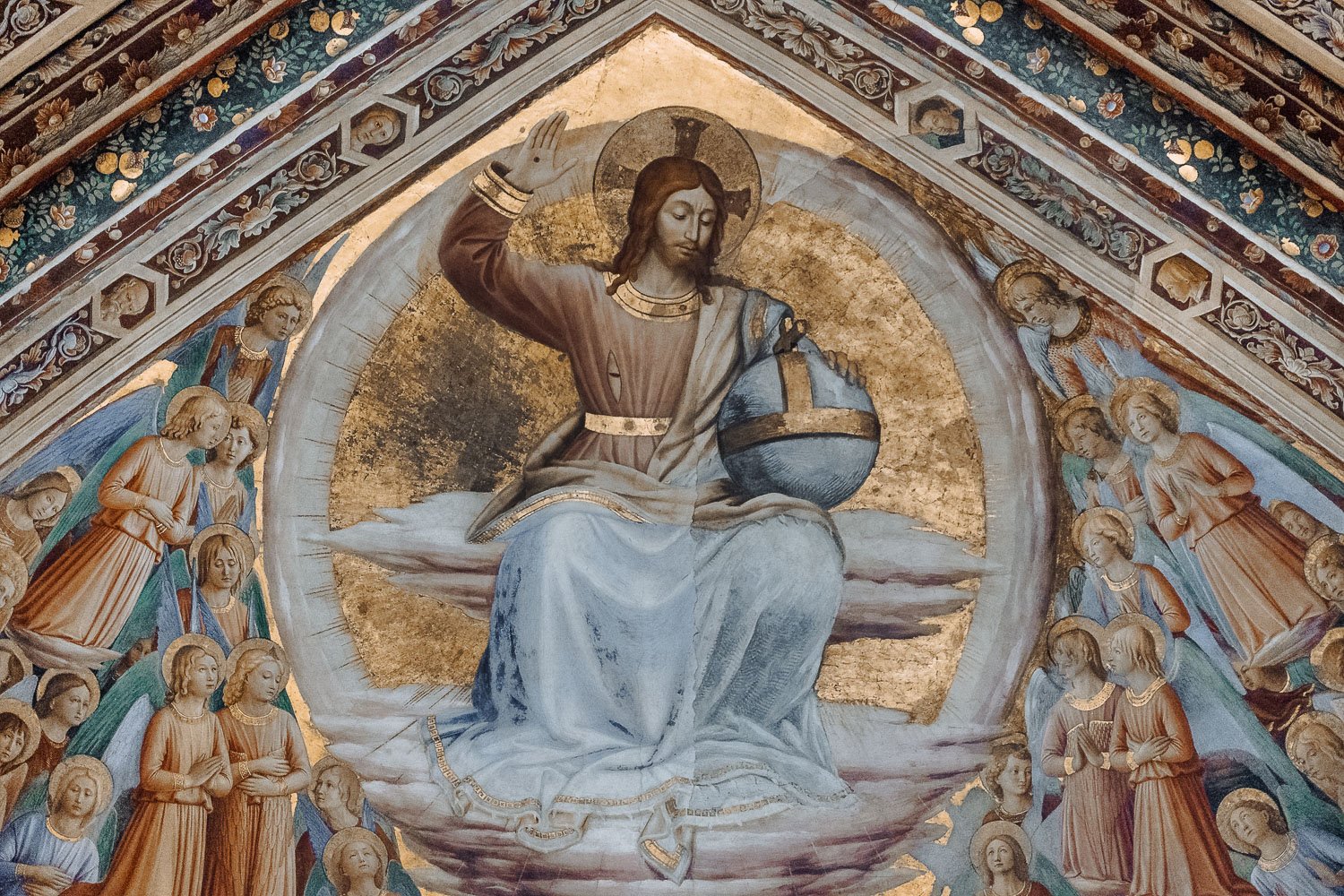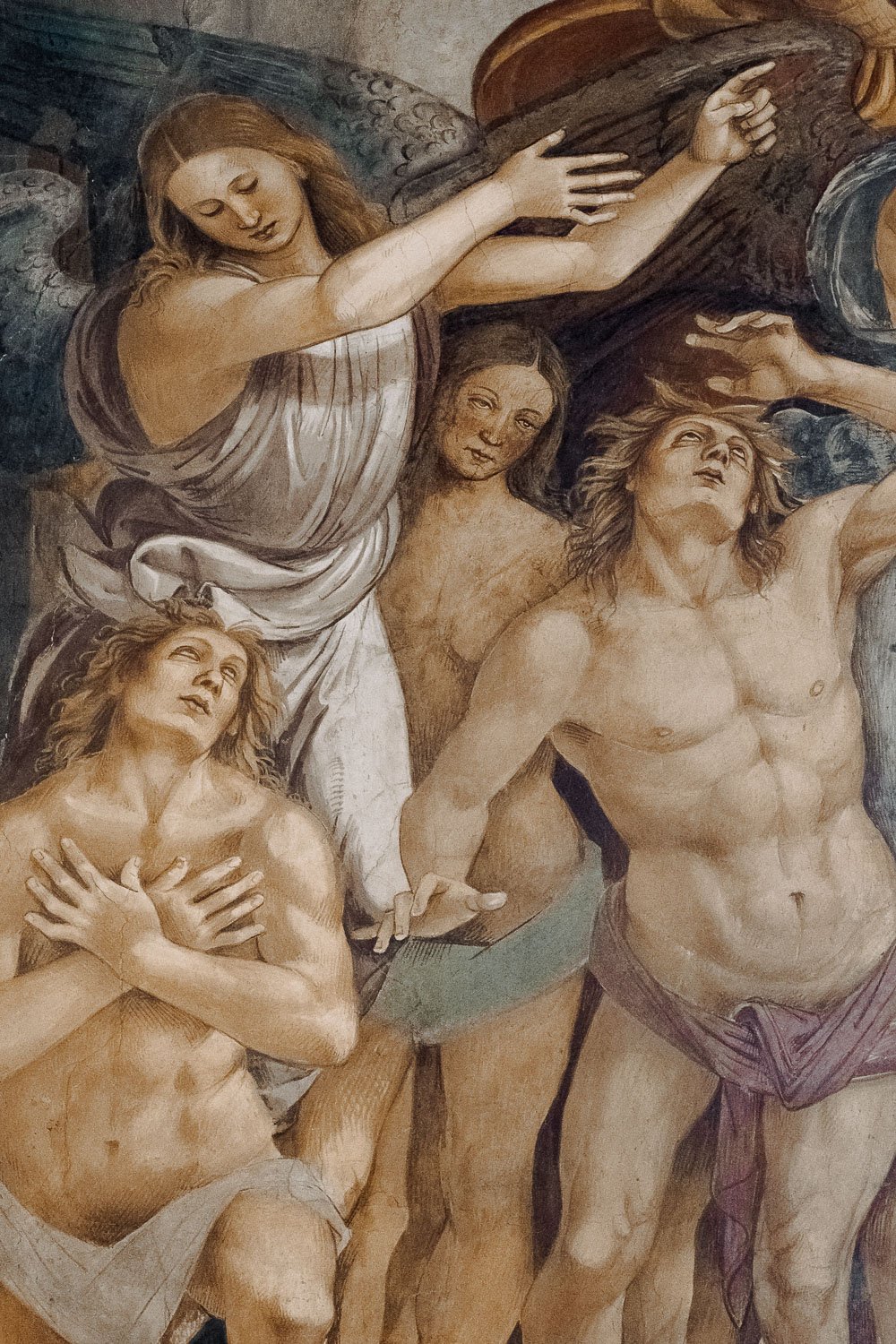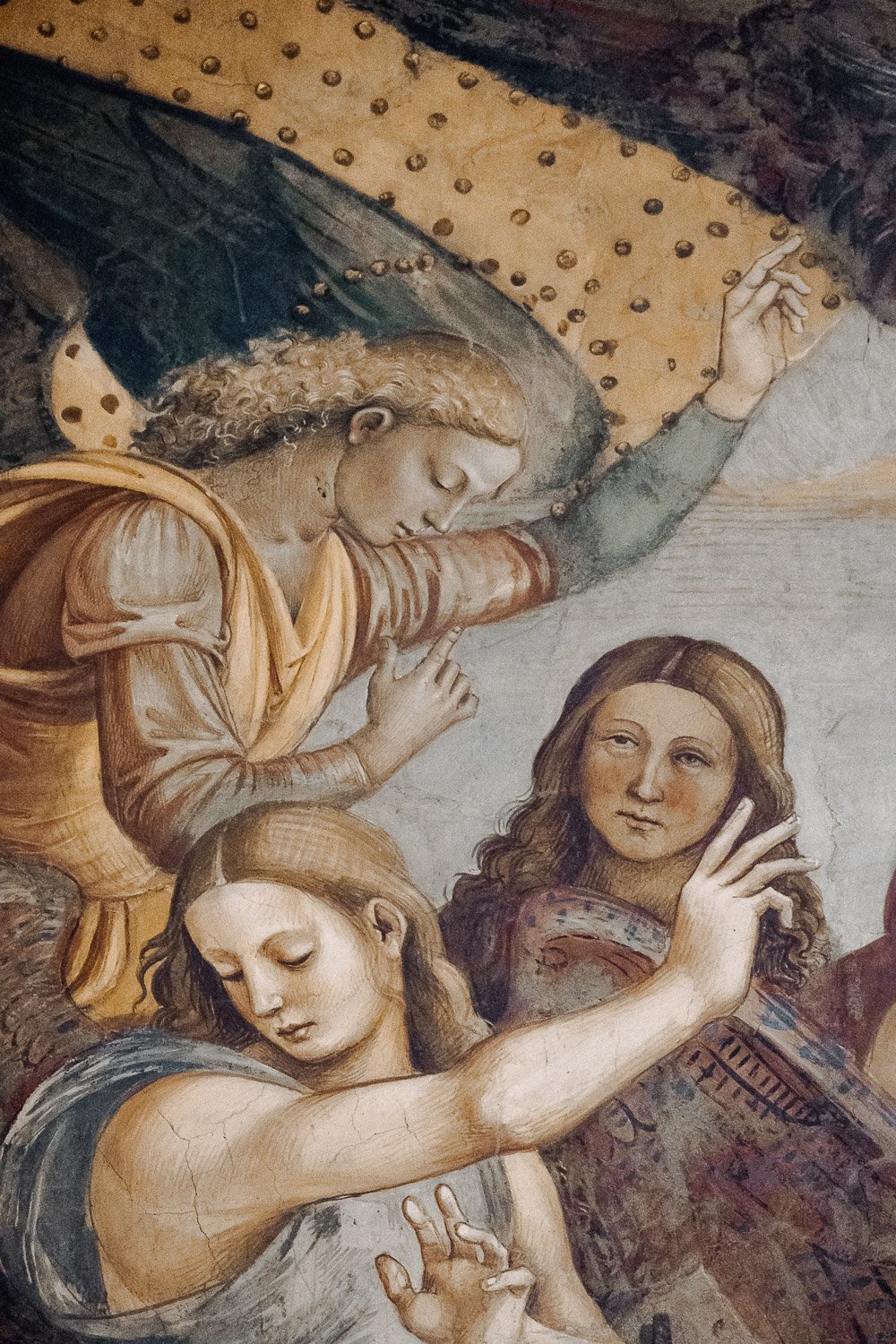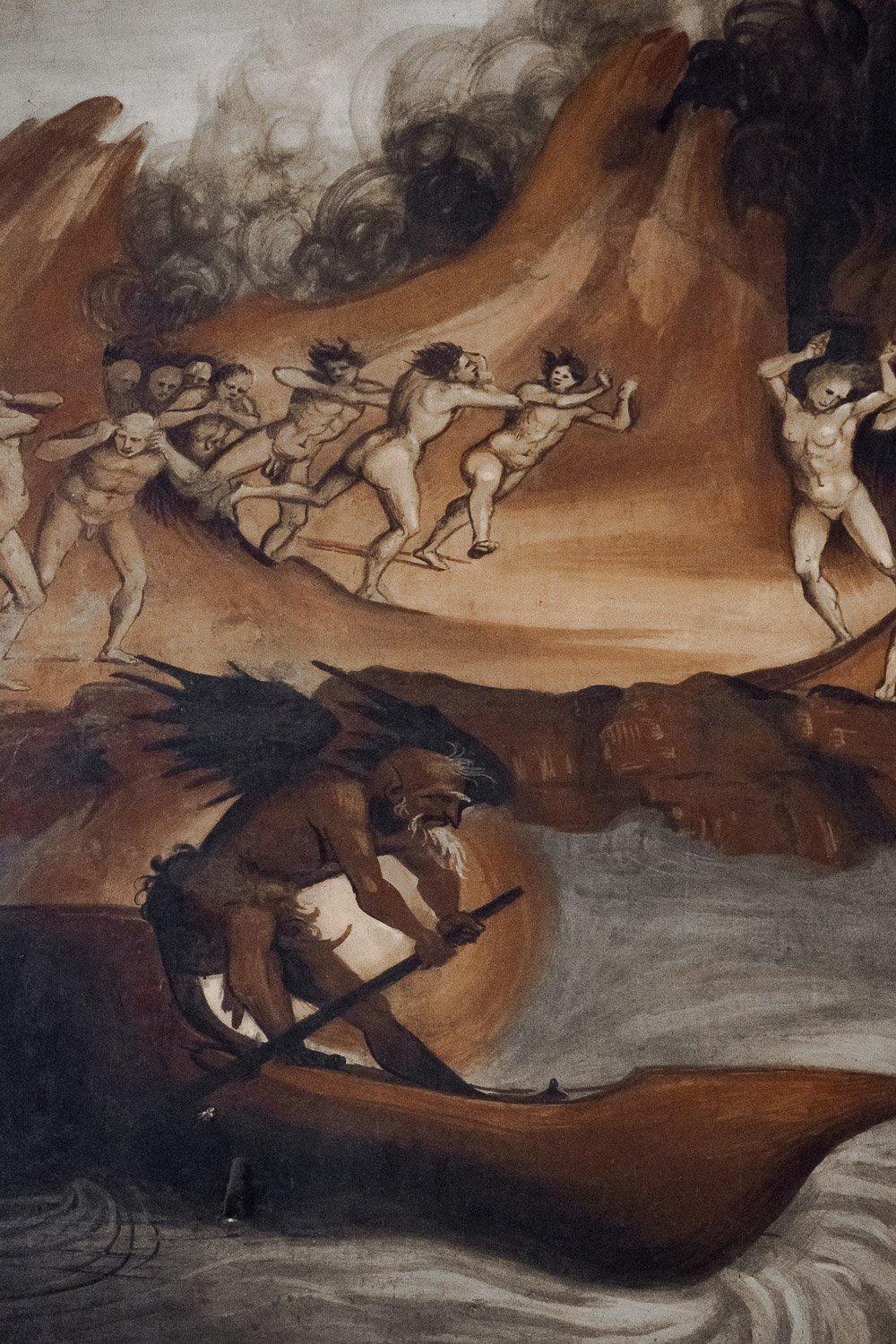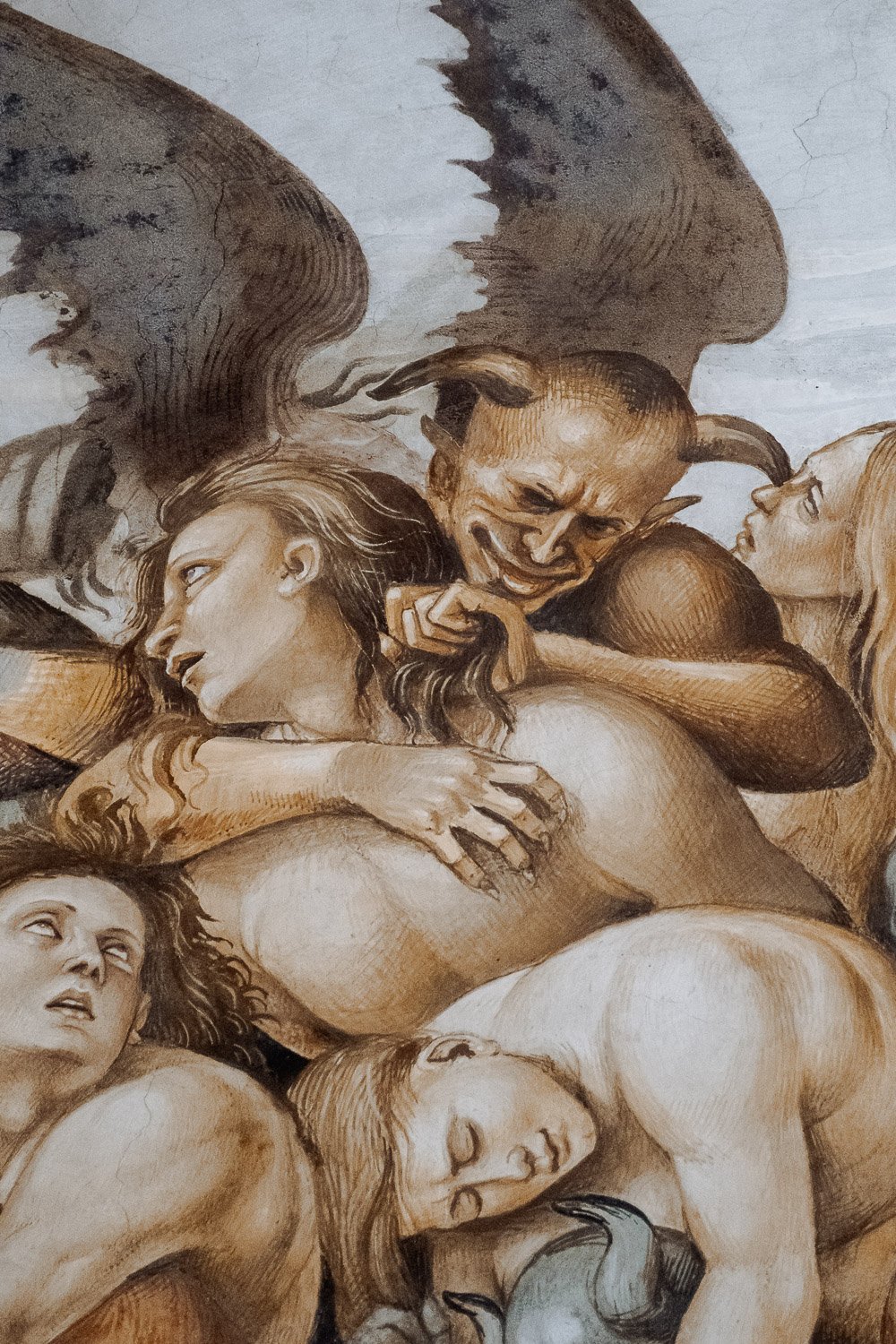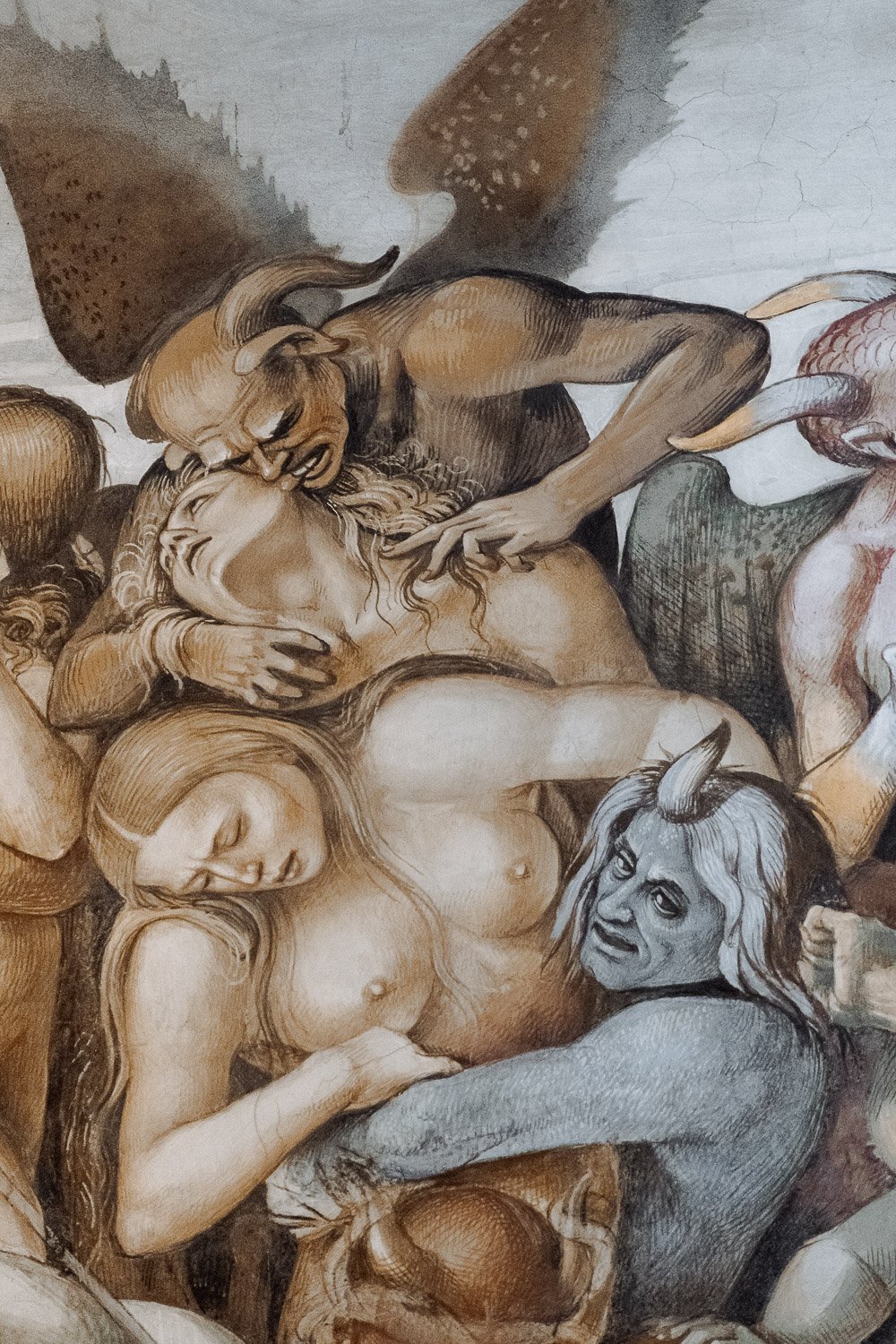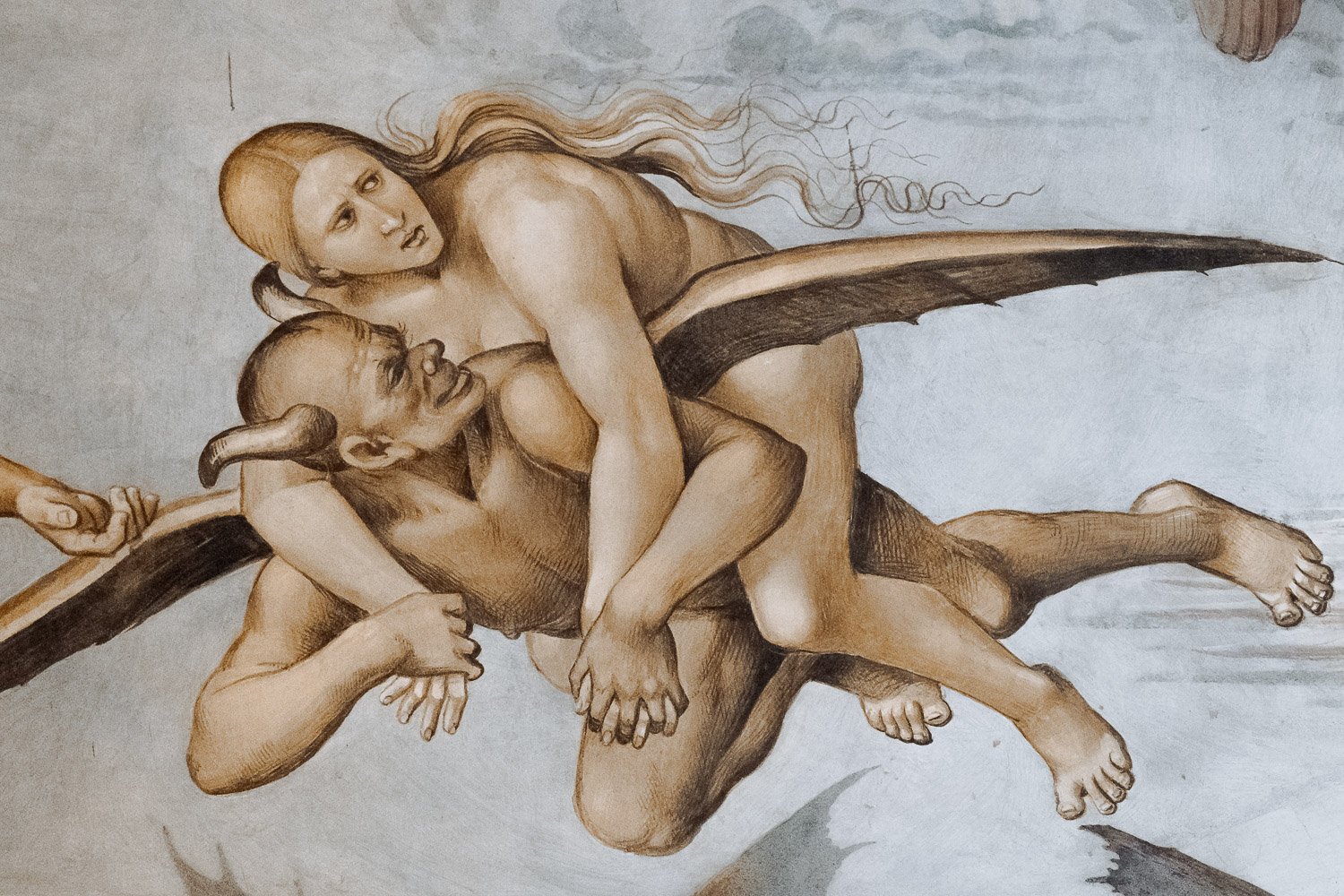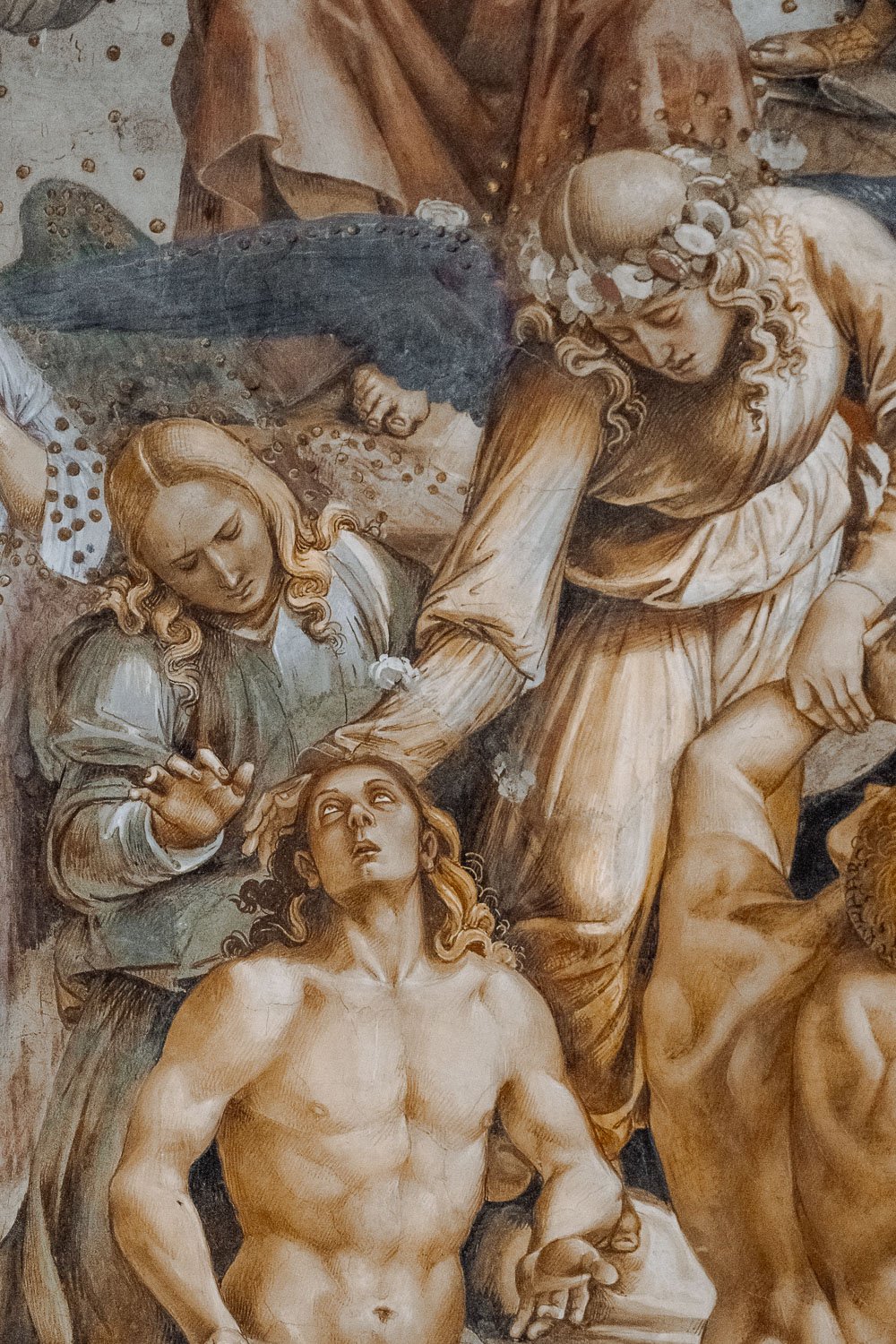Duomo di Orvieto: Golden Lily of Italian cathedrals
The Duomo di Orvieto was, without a doubt, the highlight of my visit to the city. You can easily spot this landmark from afar, standing proudly on the isolated tufa plateau on which Orvieto is built. With thousands of visitors each year, the duomo is by far the town's most popular site. Because the Duomo di Orvieto has so many interesting details, I couldn't resist writing a separate post about it. Hopefully, it helps you get the most out of your visit.
Image text
History
It all started with a Eucharistic miracle in Bolsena in 1263. During the Canon of the Mass, a consecrated host allegedly began to bleed onto a corporal (altar cloth). The appearance of blood was seen as a miracle. It confirmed that bread and wine become the body and blood of Christ at the moment of consecration.
To commemorate the miracle, Pope Urban IV ordered the cathedral's construction in Orvieto. The work started in 1290 and lasted until 1591.
Image text
Facade
The most striking part of the Duomo di Orvieto is the facade. When you stand in front of it and see the countless details and colorful mosaics, you are left open-mouthed. Pope Leo XIII once described the church as "the Golden Lily of Italian cathedrals." A well-deserved compliment to the approximately twenty artists who have worked on this beautiful cathedral.
At the bottom, several highly detailed bas-reliefs depict biblical stories from the Old and New Testaments. Most of the reliefs were made by Lorenzo Maitani and Andrea Pisano. From left to right, you can see stories from the Book of Genesis, the Tree of Jesse, scenes from the New Testament, and the Last Judgment.
Lower part of the duomo's facade
Bas-relief of Adam and Eve in the Garden of Eden, standing next to the tree of the knowledge of good and evil
Between the bas-reliefs are three bronze doors. These are relatively new and were installed in 1970. The doors depict The Seven Corporal Works of Mercy, including feeding the hungry, visiting the sick, and burying the dead.
Bronze doors in the middle with a statue of Madonna and Child above it (left), and close-up of the beautifully decorated door frame (right)
Above the bas-reliefs are four bronze statues. These were made by Lorenzo Maitani and his son Vitale. The statues represent the four evangelists: Matthew (angel), Mark (lion), John (eagle), and Luke (ox). The bronze angels above the main entrance are also the work of the Maitanis. The angels open two curtains to reveal the marble statue of the Madonna and Child.
Image text
The upper part of the cathedral is decorated with glittering mosaics designed by Cesare Nebbia. Unfortunately, the current mosaics are replicas, but that doesn't make them less breathtaking. Most of the mosaics represent scenes from the life of the Virgin Mary. At the very top, you can see the Coronation of Mary. Below that, on the left, is the Marriage of the Virgin. Depicted on the right is the Presentation of Mary in the Temple.
Mosaic of the Coronation of Mary
The Marriage of the Virgin (left), and the Presentation of Mary in the Temple (right)
Above the entrances of the church, you can see the Annunciation and the Baptism of Christ on the left. The mosaic in the center depicts the Apostles in Ecstasy for the Assumption of the Virgin. Pictured on the far right are Joachim, Anna and the Nativity of Mary.
Apostles in Ecstasy for the Assumption of the Virgin
Baptism of Christ (left), and the Nativity of Mary (right)
The focal point of the whole facade is the rose window by Andrea di Cione, also known as Orcagna. In the center of the window, you can see the head of Christ. In the corners there are four smaller mosaics that depict the doctors of the church: Sant'Agostino, San Gregorio Magno, San Girolamo, and Sant'Ambrogio. Above the window stand the twelve apostles. The figures in the niches on both sides represent the twelve prophets from the Old Testament.
Rose window with four smaller mosaics in the corners and the twelve prophets from the Old Testament
Close-up of Orcagna's rose window with the head of Christ in the center
Apse
The nave of the duomo consists of six bays and two aisles. At first glance, the church's interior appears to be much less decorated than the facade. But wait until you are in front of the apse.
Interior of the Duomo di Orvieto
In the middle, you can see a large colorful stained-glass window. This one was made by Giovanni di Bonino, a glass master from Assisi.
Frescoes dedicated to the life of the Virgin Mary can be seen on the walls of the apse. These frescoes were painted by the local artist Ugolino di Prete Ilario and a couple of collaborators. The series of frescoes were the largest in Italy at that time. No wonder it took ten years to finish them!
The duomo's apse with frescoes dedicated to the life of the Virgin Mary (left), and sunlight shining through the rose window crafted by Andrea di Cione (right)
Cappella del Corporale
This chapel houses the relics from the eucharistic miracle in Bolsena. Among them is the altar cloth with bloodstains. You may wonder why the relics were kept in Orvieto and not Bolsena. This is because the Pope was staying in Orvieto at the time.
Altar cloth with bloodstains
In the chapel, you can also find the tomb of San Pietro Parenzo. Pietro was appointed as the city's mayor by Pope Innocent III. The Pope gave him the mandate to restore order. But Pietro's efforts were so successful that he was murdered. If you look through the oval window in the center of the altar, you can see his coffin.
The walls of the Cappella del Corporale are decorated with frescoes. They depict the history of the Eucharist and the miracle of the bleeding host.
Frescoes depicting the miracle in Bolsena
Cappella San Brizio
Before leaving the cathedral, make sure to visit the Cappella San Brizio.
In 1447 Fra Angelico and Benozzo Gozzoli started the decoration of the chapel's vault. However, they did not have much time. In the same year, the Pope summoned them to come to the Vatican to paint the Niccoline Chapel. They had just finished two paintings by the time they left: the Christ in Judgment and the Angels and Prophets.
Vault of the Cappella San Brizio
Close-up of the Cappella's vault
The other paintings in the chapel are the work of Luca Signorelli. He and his school spent two years creating a series of frescoes concerning the Apocalypse and the Last Judgment. The result is a little frightening but, at the same time, incredibly beautiful to look at. Below I will describe the paintings and point out several details.
The Sermon and Deeds of the Antichrist
The first fresco on the left shows the Sermon and Deeds of the Antichrist. In the foreground, you see a man standing on a pedestal. At first, the man looks a bit like Jesus. But if you look closely, you can see that Satan is portrayed right behind him. He instructs the false prophet to spread lies and messages of destruction.
The false prophet with Satan behind him, and the woman trying to sell her body
Close-up of the woman trying to sell her body (left), and the false prophet (right)
Surrounding the false prophet are people who have clearly already been corrupted. There is a brutal massacre going on, followed by a woman trying to sell her body (the woman wearing a red dress and a blue cloth). In the background, all sorts of horrors are taking place. Fortunately, the painting also contains a hopeful message. In the top left corner, the false prophet is being hurled down from the heavens while archangel Michael is killing the Antichrist's followers with a rain of fire.
Horrors taking place in the background, as well as archangel Michael killing the Antichrist's followers with a rain of fire
Close-up of the killing of the Antichrist's followers (left), and the false prophet being hurled down from the heavens (right)
In the lower-left corner, you see two black-clad men. They watch the scene from a distance. The man in the front is a self-portrait by Luca Signorelli. Behind him is Fra Angelico.
Self-portrait of Luca Signorelli (left) and Fra Angelico (right)
The Apocalypse
Above the arch of the entrance, Signorelli painted another frightening scene: the Apocalypse.
On the right side, you can see a Sibyl with her book of prophesies. Next to her is King David with raised hand predicting the end of the world. Above them, the sky turns black, and people start to flee.
Sibyl with her book of prophesies with King David next to her (left), and people starting to flee (right)
On the left of the arch, the catastrophe continues to unfold. Demons are flying through the sky, killing everyone on earth with fire. In the bottom corner, people are falling one by one and their bodies are starting to pile up.
The whole scene is just as described in the gospel of Mark: "The sun shall be darkened, and the moon shall not give her light, And the stars of heaven shall fall, and the powers that are in heaven shall be shaken."
One of the demons flying through the sky
People are falling one by one and their bodies are starting to pile up
The Resurrection of the Flesh
The next scene, to the right of the entrance, gives a glimpse into life after death. The dead, brought back to life, crawl up through cracks in the earth. Under the watchful eye of two angels, their bones are again provided with muscles and skin. It's as if they put on a costume and become human beings again.
Resurrection of the Flesh, the dead being brought back to life
Close-up of the dead being brought back to life
The Damned in Hell and the Elect in Paradise
The story of the last two paintings begins on the wall behind the altar. At the very top, you see Jesus making the final judgment. The lucky ones are allowed to go to paradise (left). Purgatory and Hell await the others (right).
Jesus making the final judgment
Paradise
Purgatory and Hell
On the right wall, you can see how the damned are being plunged into hell. Once there, they are violently overpowered by demons. In the middle of the crowd is another self-portrait of Signorelli. This time he has depicted himself as a gray-blue devil with a horn on his forehead. He is embracing a blonde woman who is trying to break free. Is there a meaning behind this?
The damned being violently overpowered by demons
Another violent demon (left), and a self-portrait of Signorelli as a devil embracing a blonde woman, presumably his unfaithful lover (right)
It appears to be the same woman as the one on the devil's back flying above the crowd. And could it also be the same woman standing next to the false prophet, trying to sell her body? Some claim that the blond woman represents Signorelli's lover, who is being punished for being unfaithful to him.
Woman flying on a devil's back, presumably Signorelli's unfaithful lover
The Elect in Paradise is painted on the wall to the left of the altar. Above the elect, angels can be seen playing instruments. It sure looks like a better place than hell!
The Elect in Paradise
The Elect in Paradise
Practical information
| Address: | Piazza del Duomo, 26, Orvieto (Google Maps) |
| Open: |
Mon - Sat 7:30 to 19:00, Sun 13:00 to 19:00 |
| Entree fees: | Entrance to the cathedral is €5,- |



